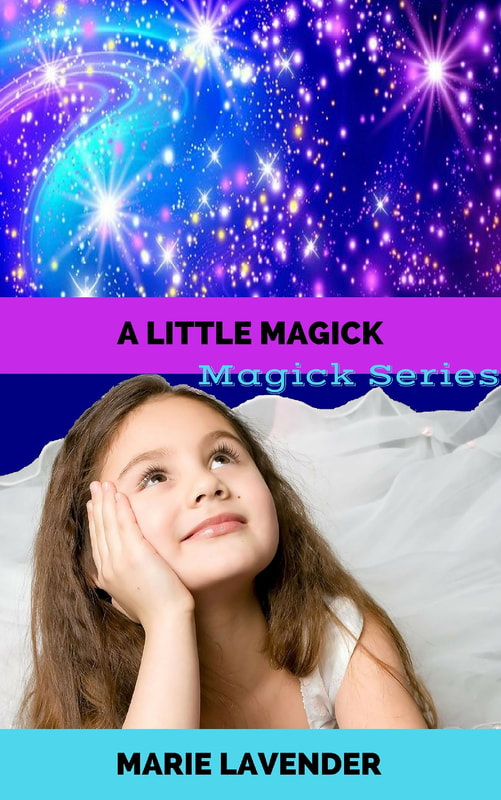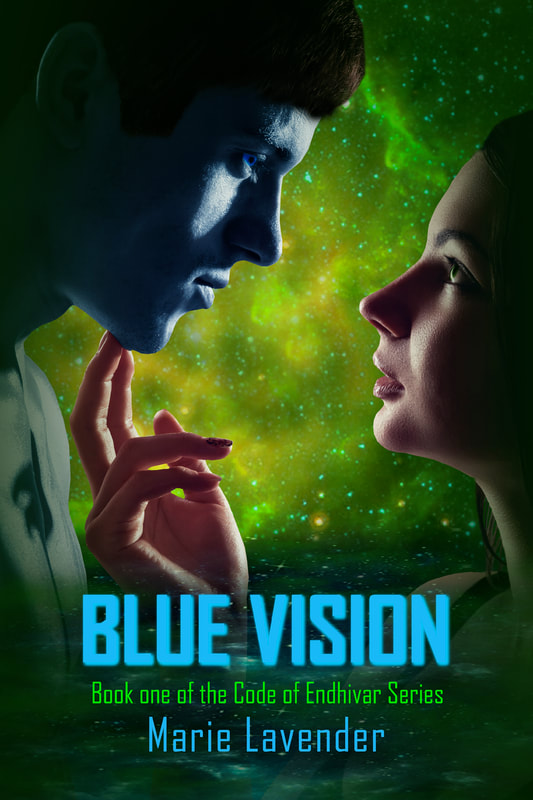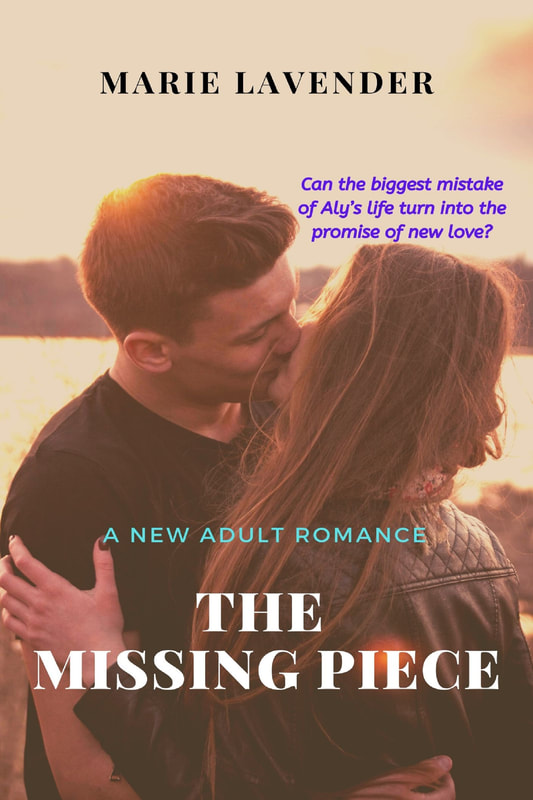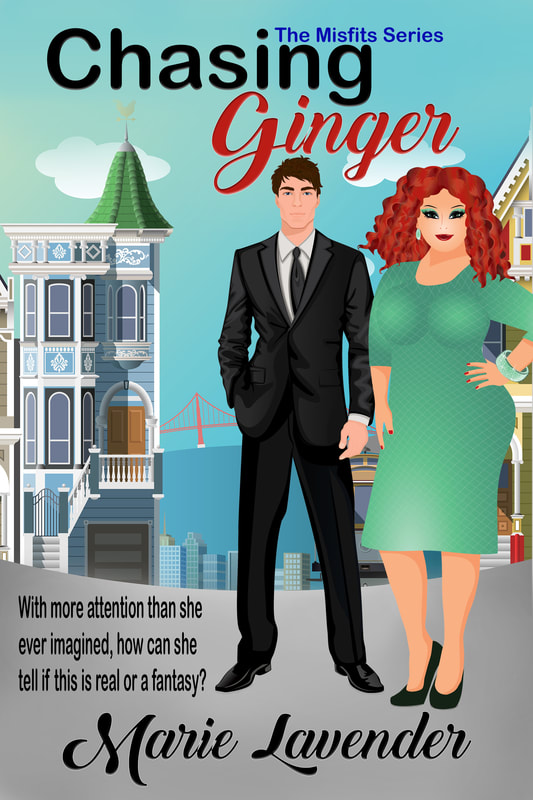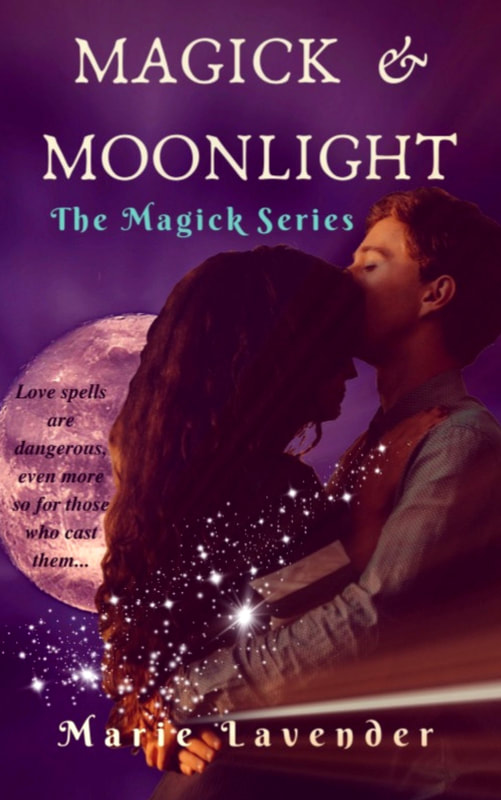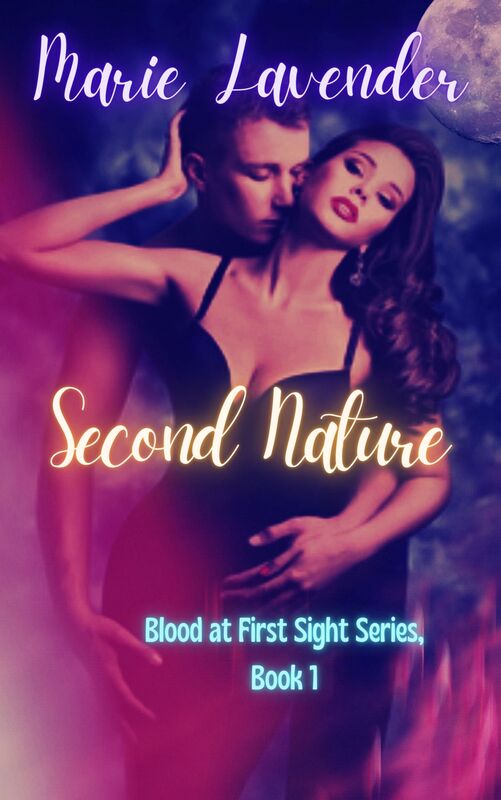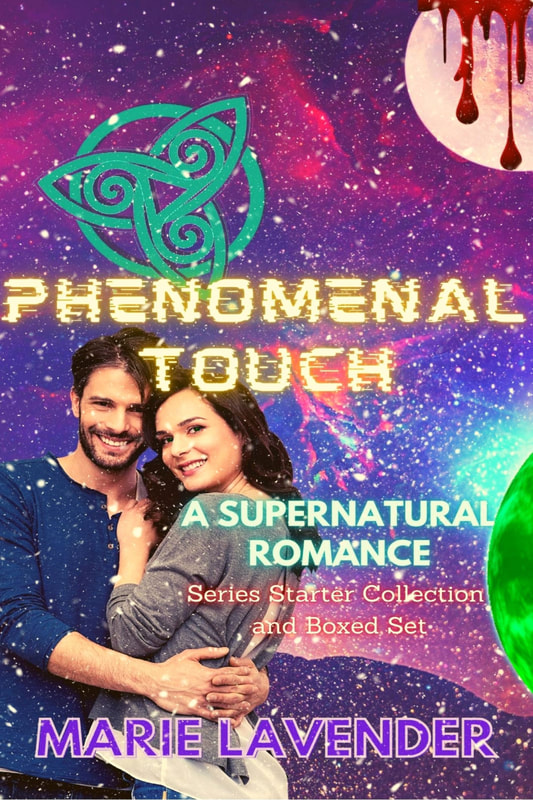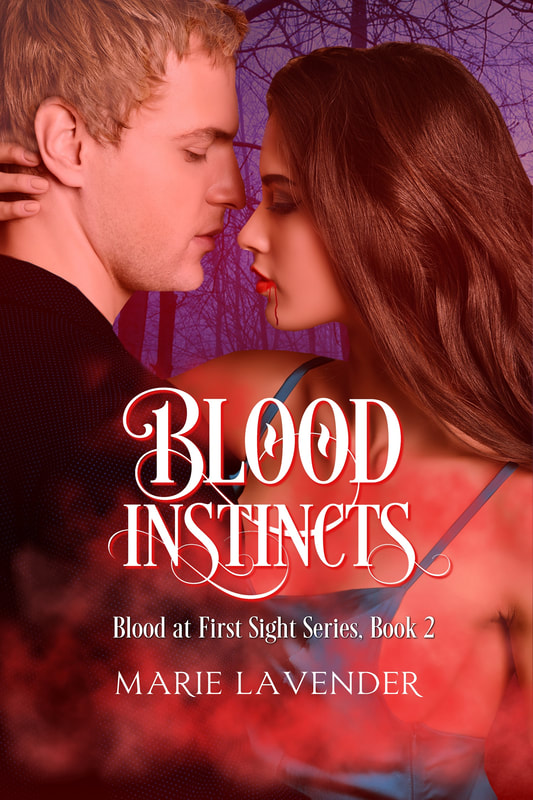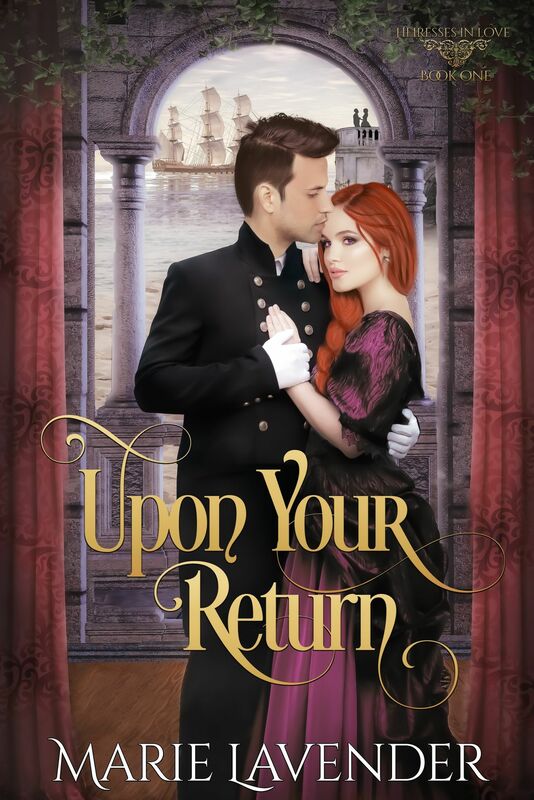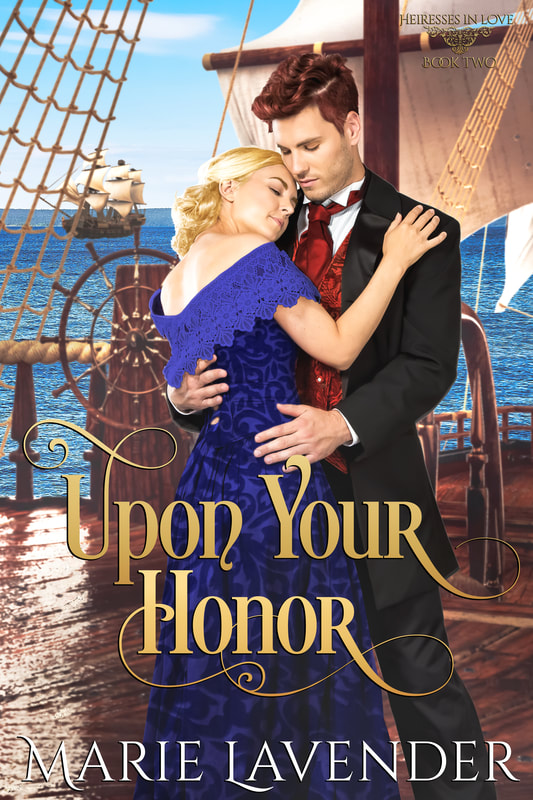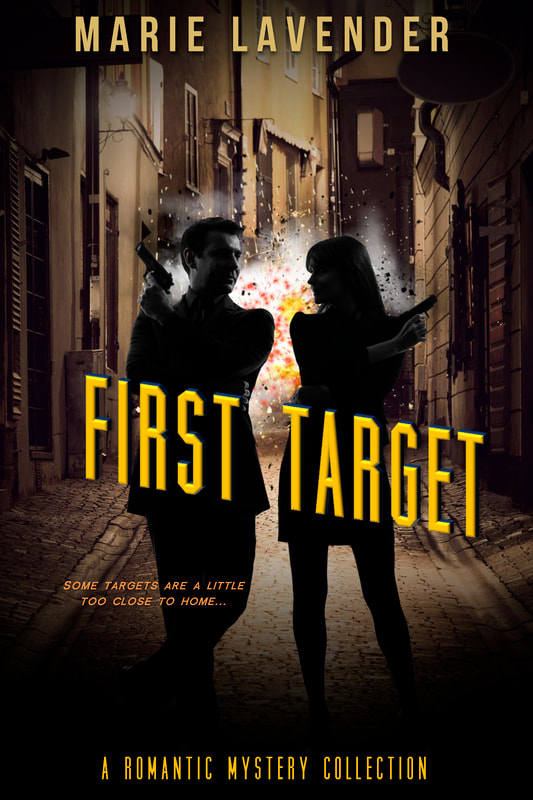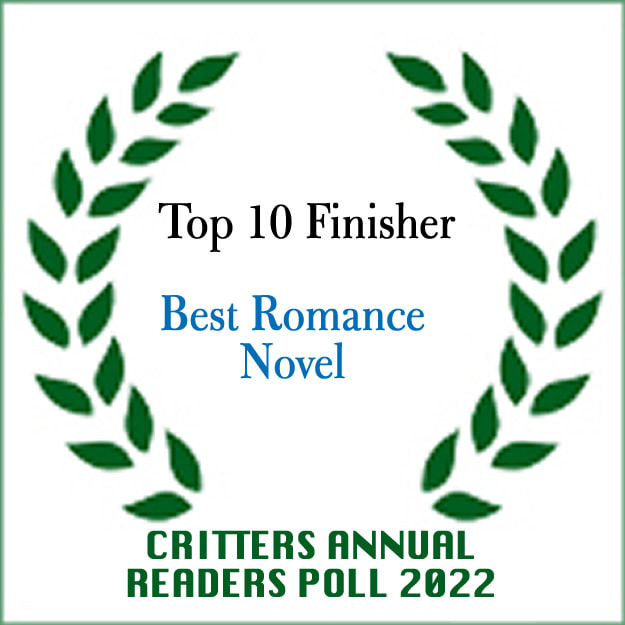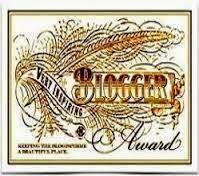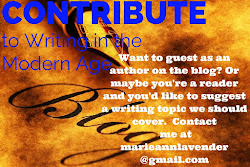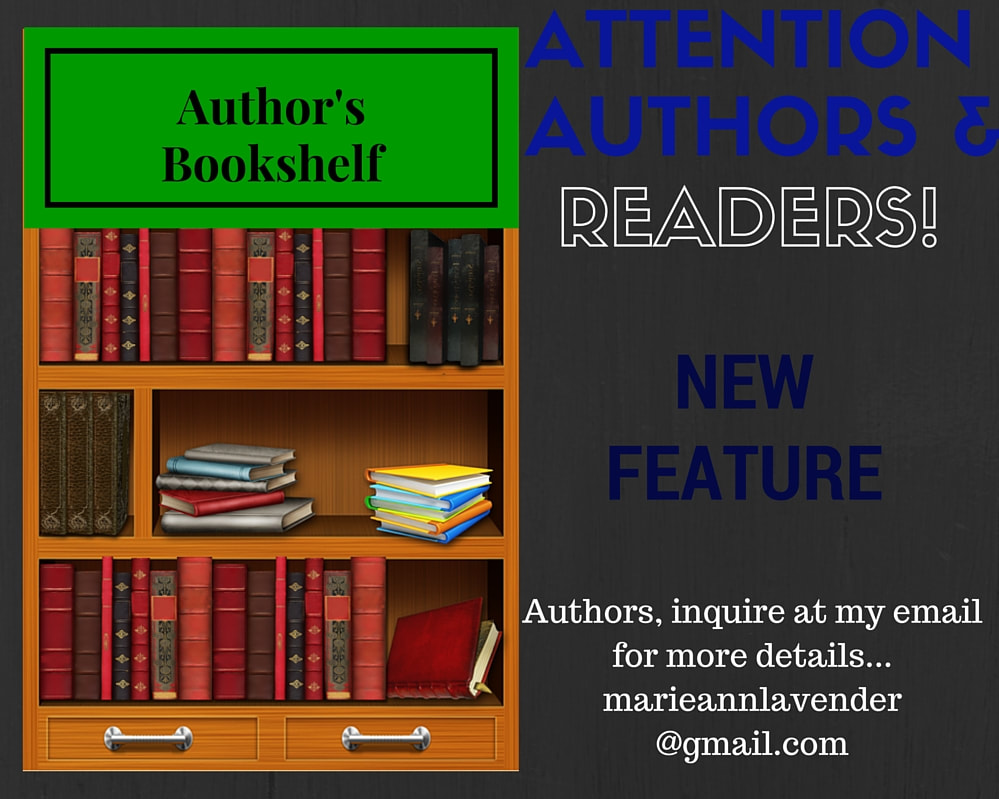|
Please welcome our guest reviewer today! Let’s see what she has to say. Take it away, Cassandra… Thank you! ♥ Miscreants, Murderers, and Thieves anthology - organized by Samuel W. Reed This was quite an interesting book! As a lover of crime fiction, this book was right up my alley. Each story was great on its own with surprise twists. As a whole, the stories make for a wonderful read for crime lovers. I was hooked from the very first story. The Temperature at Which Love Freezes by Katherine Tomlinson was one of my favorites. A story of revenge for a cheating husband. I definitely loved the twist at the end. Murder at the Magic Castle by Gabriel DiDomenico leaves you with an ending that will shock you. What I loved most about this book was the crime element. All the stories were well-written with relatable characters you want to cheer for, villains and good guys alike. There was nothing about the book I didn't enjoy. I give it 5 stars and would read it again and again. NOTE: I was provided a copy of this book in exchange for an honest review. Book Blurb: Take a tour through the minds of thirteen of today's most talented independent authors in a crime anthology like no other. Miscreants, Murderers, and Thieves hosts a cross-section of indie writers from all across America in a unique compilation of diverse voices set to take you on a journey beyond your wildest imagination. From aging detectives trapped in a magic house of hell, to a doctor with a fascination for the macabre, to New Century City, where superheroes and supervillains battle it out for supremacy, this is a genre-bending short story collection guaranteed to thrill. Featuring contributions from award-winning authors, screenwriters, and wordsmiths such as Don Bapst, David Beeler, Shawn D. Brink, Dori Ann Dupre, Gabriel DiDomenico, Dane G. Kroll, Ethel Lung, Casey Mensing, Suzanne Crain Miller, Samuel W. Reed, Katherine Tomlinson, Will Wallace & Nicholas Zeman, with illustrations by Jared Sloger. Universal Reader link: https://books2read.com/u/boqXR1 Here’s an excerpt from the book… With a last look around, Jonathan exhaled a sigh and trudged back up the walkway to the front door. He was mildly surprised to find it wouldn’t open. One of the first things he’d done when he and Kaye had moved into the house was change the lock so it would shut but not latch unless turned with a key. Probably it’s just frozen in the cold, Jonathan decided. It’s an old house. But after he jiggled the handle and pulled and tugged, it became clear that the door was, in fact, locked. Jonathan was irritated, but not yet concerned. They kept a spare key to the front door beneath a fake rock hidden in the rose bushes that bracketed the front porch like a pair of parentheses. It took him a while to find the fake rock and he scratched himself on the thorny branches of the winterized rose bushes in the process. When he reached down to pick up the phony stone one of the thick, hard thorns embedded itself in his forearm, drawing a single tear of blood, which he ignored as he stared below at the cold, bare dirt. He was puzzled at first, but that soon gave way to a feeling that he identified as … panic. He patted the pockets of his robe, unconsciously searching for a phantom key but finding only a random cough drop wrapped in sticky paper. “Fuck,” he said out loud, closing his robe a little tighter. He considered lobbing the fake rock at his bedroom window but knew Kaye would never hear it. She was a heavy sleeper and she’d been snoring when he left their bedroom. Jonathan climbed the steps back onto the porch and considered his options. The house was at the end of a cul-de-sac, small enough that he and Kaye knew all their neighbors. But the housing crisis had taken its toll on the neighborhood and only two of the houses were occupied. Their nearest neighbors had gone to visit their children for the holidays and the man who lived in the house across the street worked the night shift. Jonathan sighed. The windows on the first floor of his house were all covered by iron security grates. Even if he managed to break the glass, it wouldn’t do him any good; the openings were too small to wriggle through. He walked around the house toward the garage, wondering if he could pry the roll-down door open wide enough to crawl under it. He knelt on the damp, cold concrete to get some traction on the door handle but couldn’t budge it more than an inch. Fuck, he thought again, and then, it’s getting cold. In fact, it wasn’t actually getting colder, but the wind had picked up significantly, making it feel like it had. Jonathan stamped his feet to warm them up, and then tried jumping jacks to get the blood flowing in the rest of his body. The exercise didn’t help. He began to shiver, at first imperceptibly and then so violently that his teeth began to rattle. He started next door with the vague notion of breaking into the neighbor’s house, but halfway across the lawn he tripped on one of the pop-up sprinklers that kept their grass green in summer. He fell heavily and by the time he’d gathered himself, he’d forgotten his plan and returned to the house. He was beginning to have a hard time thinking straight. A few minutes later, it seemed like a good idea to shuck his robe and kick off the slippers, which were now loose on his cold, shrunken feet. By the time he stepped out of his boxers, he was feeling light-headed and calm. He didn’t even see the shadow lingering in the window. *** Inside the house, which she kept heated to 78 degrees against the Minnesota winter, Kaye watched as her husband peeled of his boxers in what she had learned was known as “paradoxical undressing.” It was a sign that the body and mind were starting to shut down in the cold, a symptom of extreme systemic distress. It was 23 degrees outside and the forecast called for sleet and possibly snow before the night was over. The wind was from the north, sweeping down from Canada and dropping the perceived temperature to somewhere around minus 15. That was cold, but not spectacularly cold. Kaye had read that in parts of Siberia empty plastic bags would freeze within minutes in the frigid temperatures; freeze and then crack like glass. She’d seen movies where people were flash-frozen by liquid nitrogen and then shattered like fine china. She’d have liked to have seen Jonathan break into a million frozen shards. But that might have looked suspicious to the police. Better to keep it simple. A lot of people simply freeze to death every winter. She’d looked it up. There’d be no reason for the police to question her story that she’d found him dead on the front lawn after he’d inexplicably wandered out into the cold. They’d find the 25-year-old scotch in his belly in the autopsy and nod knowingly. Most cold-related deaths involved alcohol, Kaye had read. Jonathan always had a drink or two before bed. She knew it was the only way he could stomach lying so close to her night after night. The police probably wouldn’t check his cell phone but if they did, it would be a bonus. The text had come from a burner phone Kaye had picked up the day after their last anniversary, the anniversary where he’d gotten her a $50 gift certificate to Bed, Bath, and Beyond. It had been easy enough to schedule the text to arrive in the middle of the night. The number wouldn’t track back to Lila, of course, but Kaye had attached one of the nude pictures she’d found in Jonathan’s computer. Lila’s skanky face had been clearly visible. It wouldn’t take the police long to find her and to ask her why she’d enticed her lover out of the house on such a cold night. Kaye had watched a lot of Forensics Files. The police wouldn’t find the photo on Jonathan’s computer. Kaye had replaced his hard drive after duplicating everything on the system except for the pictures and the incriminating emails. It had taken her close to a month, but she was nothing if not patient. Kaye really didn’t bear her rival any ill will, but if Lila was implicated in Jonathan’s death, well, it’d be gravy. At the thought of gravy, Kaye's stomach growled. Maybe I’ll make some ham and red-eye gravy, she thought. Once all the commotion dies down. Maybe some biscuits, too. Something that’ll stick to my ribs on such a cold morning. Kaye smiled as she turned back to her cozy cotton bed. She had always loved the cold. BOOK INFO: AUTHOR: Samuel W. Reed (editor, organizer) and Various Authors TITLE: Miscreants, Murderers, and Thieves GENRE: Short Stories Anthologies RELEASE DATE: January 25, 2020 PUBLISHER: Reed Press ISBN/ASIN: B0846Y2J51 OUR RATING: 5 stars REVIEWED BY: Cassandra Jones of cassandra-mywritingworld.blogspot.com Guest Blogger/Reviewer Bio:  I am an author from West Virginia. I write mostly crime fiction, horror, romance, poetry, and even children’s. When not writing, I spend most of my time reading. I love to write reviews for every book I read and I read pretty much anything I can get my hands on. Awesome. Thanks for this, Cassandra, and for stopping by the blog! :) Check out our latest Writing in the Modern Age blog post here.
0 Comments
Please welcome our guest reviewer today! Let’s see what she has to say. Take it away, Jamie… Thank you! ♥ Miscreants, Murderers, and Thieves anthology - organized by Samuel W. Reed A little suspense, a little tiny bit of romance, a lot of plot twists, a little sci-Fi maybe. This anthology has a little bit of everything for everyone. Lots of didn't-see-that-coming moments too. Quick short stories. I did feel as if some of the stories left out some important details and may have been rushed to "finish". NOTE: I was provided a copy of this book in exchange for an honest review. I give this book 4 stars. Book Blurb: Take a tour through the minds of thirteen of today's most talented independent authors in a crime anthology like no other. Miscreants, Murderers, and Thieves hosts a cross-section of indie writers from all across America in a unique compilation of diverse voices set to take you on a journey beyond your wildest imagination. From aging detectives trapped in a magic house of hell, to a doctor with a fascination for the macabre, to New Century City, where superheroes and supervillains battle it out for supremacy, this is a genre-bending short story collection guaranteed to thrill. Featuring contributions from award-winning authors, screenwriters, and wordsmiths such as Don Bapst, David Beeler, Shawn D. Brink, Dori Ann Dupre, Gabriel DiDomenico, Dane G. Kroll, Ethel Lung, Casey Mensing, Suzanne Crain Miller, Samuel W. Reed, Katherine Tomlinson, Will Wallace & Nicholas Zeman, with illustrations by Jared Sloger. Universal Reader link: https://books2read.com/u/boqXR1 Here’s an excerpt from the book… With a last look around, Jonathan exhaled a sigh and trudged back up the walkway to the front door. He was mildly surprised to find it wouldn’t open. One of the first things he’d done when he and Kaye had moved into the house was change the lock so it would shut but not latch unless turned with a key. Probably it’s just frozen in the cold, Jonathan decided. It’s an old house. But after he jiggled the handle and pulled and tugged, it became clear that the door was, in fact, locked. Jonathan was irritated, but not yet concerned. They kept a spare key to the front door beneath a fake rock hidden in the rose bushes that bracketed the front porch like a pair of parentheses. It took him a while to find the fake rock and he scratched himself on the thorny branches of the winterized rose bushes in the process. When he reached down to pick up the phony stone one of the thick, hard thorns embedded itself in his forearm, drawing a single tear of blood, which he ignored as he stared below at the cold, bare dirt. He was puzzled at first, but that soon gave way to a feeling that he identified as … panic. He patted the pockets of his robe, unconsciously searching for a phantom key but finding only a random cough drop wrapped in sticky paper. “Fuck,” he said out loud, closing his robe a little tighter. He considered lobbing the fake rock at his bedroom window but knew Kaye would never hear it. She was a heavy sleeper and she’d been snoring when he left their bedroom. Jonathan climbed the steps back onto the porch and considered his options. The house was at the end of a cul-de-sac, small enough that he and Kaye knew all their neighbors. But the housing crisis had taken its toll on the neighborhood and only two of the houses were occupied. Their nearest neighbors had gone to visit their children for the holidays and the man who lived in the house across the street worked the night shift. Jonathan sighed. The windows on the first floor of his house were all covered by iron security grates. Even if he managed to break the glass, it wouldn’t do him any good; the openings were too small to wriggle through. He walked around the house toward the garage, wondering if he could pry the roll-down door open wide enough to crawl under it. He knelt on the damp, cold concrete to get some traction on the door handle but couldn’t budge it more than an inch. Fuck, he thought again, and then, it’s getting cold. In fact, it wasn’t actually getting colder, but the wind had picked up significantly, making it feel like it had. Jonathan stamped his feet to warm them up, and then tried jumping jacks to get the blood flowing in the rest of his body. The exercise didn’t help. He began to shiver, at first imperceptibly and then so violently that his teeth began to rattle. He started next door with the vague notion of breaking into the neighbor’s house, but halfway across the lawn he tripped on one of the pop-up sprinklers that kept their grass green in summer. He fell heavily and by the time he’d gathered himself, he’d forgotten his plan and returned to the house. He was beginning to have a hard time thinking straight. A few minutes later, it seemed like a good idea to shuck his robe and kick off the slippers, which were now loose on his cold, shrunken feet. By the time he stepped out of his boxers, he was feeling light-headed and calm. He didn’t even see the shadow lingering in the window. *** Inside the house, which she kept heated to 78 degrees against the Minnesota winter, Kaye watched as her husband peeled of his boxers in what she had learned was known as “paradoxical undressing.” It was a sign that the body and mind were starting to shut down in the cold, a symptom of extreme systemic distress. It was 23 degrees outside and the forecast called for sleet and possibly snow before the night was over. The wind was from the north, sweeping down from Canada and dropping the perceived temperature to somewhere around minus 15. That was cold, but not spectacularly cold. Kaye had read that in parts of Siberia empty plastic bags would freeze within minutes in the frigid temperatures; freeze and then crack like glass. She’d seen movies where people were flash-frozen by liquid nitrogen and then shattered like fine china. She’d have liked to have seen Jonathan break into a million frozen shards. But that might have looked suspicious to the police. Better to keep it simple. A lot of people simply freeze to death every winter. She’d looked it up. There’d be no reason for the police to question her story that she’d found him dead on the front lawn after he’d inexplicably wandered out into the cold. They’d find the 25-year-old scotch in his belly in the autopsy and nod knowingly. Most cold-related deaths involved alcohol, Kaye had read. Jonathan always had a drink or two before bed. She knew it was the only way he could stomach lying so close to her night after night. The police probably wouldn’t check his cell phone but if they did, it would be a bonus. The text had come from a burner phone Kaye had picked up the day after their last anniversary, the anniversary where he’d gotten her a $50 gift certificate to Bed, Bath, and Beyond. It had been easy enough to schedule the text to arrive in the middle of the night. The number wouldn’t track back to Lila, of course, but Kaye had attached one of the nude pictures she’d found in Jonathan’s computer. Lila’s skanky face had been clearly visible. It wouldn’t take the police long to find her and to ask her why she’d enticed her lover out of the house on such a cold night. Kaye had watched a lot of Forensics Files. The police wouldn’t find the photo on Jonathan’s computer. Kaye had replaced his hard drive after duplicating everything on the system except for the pictures and the incriminating emails. It had taken her close to a month, but she was nothing if not patient. Kaye really didn’t bear her rival any ill will, but if Lila was implicated in Jonathan’s death, well, it’d be gravy. At the thought of gravy, Kaye's stomach growled. Maybe I’ll make some ham and red-eye gravy, she thought. Once all the commotion dies down. Maybe some biscuits, too. Something that’ll stick to my ribs on such a cold morning. Kaye smiled as she turned back to her cozy cotton bed. She had always loved the cold. BOOK INFO: AUTHOR: Samuel W. Reed (editor, organizer) TITLE: Miscreants, Murderers, and Thieves GENRE: Crime Fiction Anthology RELEASE DATE: January 25, 2020 PUBLISHER: Reed Press ISBN/ASIN: B0846Y2J51 OUR RATING: 4 Stars REVIEWED BY: Jamie M. Guest Blogger/Reviewer Bio: 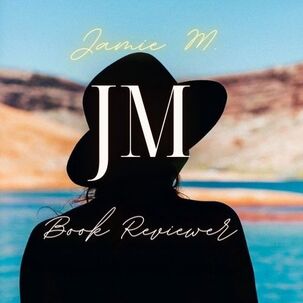 My name is Jamie Manous. I am a single mom with two adult kids, both in college. I also have three fur babies, two dogs, and one cat. When I am not working or caring for my family, I spend my downtime reading and writing reviews for books and products I like. I like reading because it allows me to escape the world for a couple of hours and destress. I have done countless reviews for Amazon, and I have reviewed many authors including Michelle Major, Jo McNalley, Eva Moore, and E.M Shue. Most of the authors I review write Romance/Harlequin. But I enjoy reading genres like Romance/Harlequin, Murder Mystery, True Crime, Historical Nonfiction, and Historical Fiction. On very rare occasions, I read Fantasy Literature like Harry Potter or Twilight. I have reviewed for many years and still prefer a good ole paperback any day and own a personal library with about 7,000 books. Awesome. Thanks for this, Jamie, and for stopping by the blog! :)
Please welcome our guest reviewer today! Let’s see what she has to say. Take it away, Virginia… Thank you! ♥ The Me Too Girl by Lance and James Morcan This is an intense and short read that reflects the #MeToo moment. I recommend it to those who need to better understand those affected by sexual abuse or for those who are suffering or have suffered sexual abuse. It’s especially helpful to help those not abused to better understand some victims’ issues dealing with abusers who have almost omnipotent power over them. Too many victims have no hope or alternative of something else outside or beyond their abusive situation. It was awesome to experience how Suzie found some other way than giving in. There should always be a way out, an alternative, a “something better than this.” Unfortunately, this is not always possible. But Suzie found a way, even using new allies. Though it would have been nice for this to be a true story, this book had to be fiction, because few victims achieve the freedom and peace that Suzie did. This story should remind us all to notice better those around us, to reach out and actually assist those who have no advocate, and to stop abusers whenever they are found. I’m fine with the story being short. Too long or more detail could traumatize readers, especially ones who have lived a life like Suzie’s. The only downside of this book for me was that I wondered whether the authors were trying to advocate for victims or were trying to capitalize on a hot topic at the time. NOTE: I was provided a copy of this book in exchange for an honest review. I give this book 4 stars because the MC overcame abuses and addictions that destroy more humans than not. Book Blurb: Young Los Angeles public relations exec Suzie Fox is being blackmailed for sex by a bad cop, a senior officer of the LAPD no less. Suzie fights back the only way she knows how, and, in the process, unwittingly becomes a beacon, a shining light, for America's Me Too movement and for abused women everywhere. But will justice be served? Universal Reader link: https://books2read.com/u/b5WWp6 Here’s an excerpt from the book… The first I became aware he was waiting for me was when I crossed the street. I was about to enter the building when the patrol car’s passenger door opened and the passenger stepped out, blocking my path. I recognized him immediately despite the fact last time I saw him he wore the uniform of a police officer. Holy shit! Hector Williams, or Heck to his associates, was the LAPD’s Deputy Chief of Police. He was also kind of hard to forget. A hulking specimen, the forty-nine-year-old Williams stood six foot six and towered over all but a rare few of the passersby currently using the sidewalk outside my apartment. That wasn’t the main reason I remembered Deputy Chief Williams, however. We had a history of sorts. A history I’d rather forget. Williams smiled at me as he ran his eyes over my body and made no attempt to hide the fact he liked what he saw. His was a cruel smile and there was no affection in those cold, gray eyes. Glancing at the security camera above the building’s entrance, he smiled again as he flashed his ID card and, turning his face away from the camera, he said, “Hey little Suzie, remember me? I’m now Deputy Chief Hector Williams.” I shuddered involuntarily. I remember you alright. “What the hell do you want?” “Now, is that any way to greet ol’ Heck?” Williams took me gently but firmly by the arm and escorted me a little way along the sidewalk. Whether it was because of the presence of the security camera or the close proximity of his fellow officer in the nearby patrol car I wasn’t sure. Knowing him, it was probably because of both of those things. As we walked, my mind was racing. When I’d last seen Williams I’d been using another name and residing elsewhere in this city – in Venice, to be precise. That was three or four years ago now. Since then, I’d adopted a complete change of lifestyle, reverted to using my real name and relocated to new premises at least three times. In doing so, I believed I’d never see the man again. At least I prayed I’d never see him again. How in God’s name did you find me, Hector? BOOK INFO: AUTHOR: Lance and James Morcan TITLE: The Me Too Girl GENRE: Crime Drama RELEASE DATE: November 5, 2019 PUBLISHER: Sterling Gate Books ISBN/ASIN: B08137BDGH OUR RATING: 4 Stars REVIEWED BY: V.B. “Can Do Indie Author” Guest Blogger/Reviewer Bio:  VB is an indie author who writes romance and Sci Fi and voraciously reads anything (with some limits). When she’s not reading and writing, she’s working a day job to pay for her truck habit and puttering around her house. Awesome. Thanks for this, V.B., and for stopping by the blog! :)
Explore the A to Z's of Writing: an admin article by Marie Lavender
This week, I thought I'd take a moment to go back to basics. I would like to explore some terms we use in the writing industry. For newbies, you'll hear these from fellow writers or editors at your publisher at some point. Or, you might see them on how-to articles. And if you've taken a writing workshop at all, you've probably heard most of them. Even if you're a seasoned writer, it can't hurt to reacquaint yourself with these words or phrases, as well as to keep the following advice in mind. So, without further ado, let's explore the alphabet of writing...
1. A for Antagonist - The villain in a story, or at least a concept/obstacle which stands in the way of the main character (protagonist) reaching his/her goals or happiness.
Writer Tip: Always include an antagonist, or at least a barrier preventing the protagonist from getting what he wants, in any work of fiction. This automatically creates conflict, which heightens tension and moves the plot along. 2. B for Book - a published volume which includes a single manuscript, or a collection or anthology of several works. Such work housed within the book can be fictional in nature, fact-based, or even include poetry. There are full-length books in the industry, as well as shorter ones. A published 'book' may be in digital (ebook) or physical format (such as a trade paperback or hardcover). A 'chapbook' is often a shorter book written by one author, with numerous poems or short stories included. Writer Tip: Whether you decide to get published traditionally or on your own, do your homework on your intended genre and make sure your manuscript is properly edited and formatted in advance. 3. C for Creativity - A type of self-expression for a writer or artist which may result in the form of writing, painting, sketching, or designing a work of art. Creativity is the act of turning new ideas into reality. Some businesses might ask an employee to implement creative problem-solving just to come up with a unique solution to an issue. Writer Tip: Stretch your creative muscles by trying different mediums. Start writing in a separate fiction genre, go for an essay, or construct a poem instead. Another option would be to paint or draw a scene or element from your story. Some fantasy writers like to expand on the idea of world-building by making a map of that fictional world, a fun detail to include inside the book when it gets published. Create a shadowbox for a room in your house (use a specific theme), or even paint the wall in a new color.
Any of these creative endeavors can open your mind to new writing ideas.
4. D for Development and Dialogue Development - You'll usually see this in reference to 'character development' or 'characterization'. A character is a person represented in a fictional tale. The story can be told from this individual's perspective. Writer Tip: Know your characters well, especially the main ones. Even if you don't include every detail in the story, it can't hurt to know how a character would react to a certain situation. Be sure to add 'consistent inconsistencies' (for example, a thrill-seeker who is somehow afraid of heights). More than than anything, though, you must learn to listen to your main character. Dialogue - The speech patterns and discussions between characters. This is separate from the internal thoughts (monologue) of a main character. Dialogue in a book should be as natural as possible. Writer Tip: To exhibit realistic dialogue in a story, take some time to recognize the flow of conversations in real life. How do people talk? What gestures or sounds do they make during specific parts of the discussion? How do they emote or express themselves?
5. E for Empathy - A sense of fellow feeling for another person, or putting yourself in their place. This is a key component for any writer who intends to create a believable character. It's also necessary to add enough emotion which translates on the page so that readers will start to care about what happens to your character. The way you do, right? ;) If you have begun to wonder where you're going wrong, then try to connect better with your character. Learn more and imagine how they'd respond to situations.
I know I've done my job when I'm feeling the emotions that the character is going through. If he or she is sad, tears are probably streaming down my face, too. No, I'm not really crazy. This is just the writer's journey as the story progresses. It's no different than getting choked up while watching a dramatic film. When we write, the story plays out in our heads like a movie. So, why wouldn't we respond to that in kind?
Writer Tip: Know the plot and main character well enough to express those facets within the story. Remember, empathy is deeper than sympathy. Readers will come back for more if you evoke the same emotions in them. Make the story and characters relatable.
6. F for Fiction - Often told in story or novel form, fiction is a creative work, concerning people, places, or events. It is not based in fact, though certain objects, historical figures, and actions which are mentioned can appear real. The key elements of fiction include character, theme, plot, point of view, setting, conflict, and tone. Fiction can be divided into different areas or 'genres'. Writer Tip: Unfortunately, some parts of reality must off-set an imaginary world. The more of a relatable quality you can add to any story, the more likely a reader will connect with the characters and the events happening therein. 7. G for Genre - This describes the category that a specific book falls under. Some examples are romance, mystery, science fiction, and horror. You've likely been on Amazon and noticed all the sub-genres listed there as well. So, that leaves a lot of room for writers to put their stories. Writer Tip: Try your hand at writing different genres. Use the following prompt: Rain came down in sheets, a hard battle against each window, while lightning struck nearby. The raging storm outside, though, hardly compared to the one within. Continue the story on your own from where the last sentence started. At the same time, think about the separate tones you can add to the tale to make it more romantic, mysterious, supernatural or spacey, and even creepier. Write four different versions, one for each genre - romance, mystery, science fiction (feel free to substitute asteroids for rain, as I know it doesn't rain in space), or horror. They don't need to be long stories or even finished, just enough to establish tone. Then, decide which one you like best. 8. H for Hook - A 'hook' is a sentence in the first paragraph of a scene or chapter which compels the audience to keep reading. If this is done well, the pop, so to speak, usually falls in the first sentence. Similarly, a 'closing' positioned at the end of a scene or chapter, should make the reader want to find out more. That means they're in it for the long haul, prepared to continue diving into the reading experience. Writer Tip: Do your best to avoid losing the audience in the first chapter, but especially in the first paragraph. Draw someone in with a leading sentence that makes them wonder what happens next. If you effectively use the same technique for opening and closing each scene and chapter, you'll have nailed a big part of the author job description. The most challenging portion of landing a good hook, however is doing it for the whole project, in the first sentence of a story or book. 9. I for In the Middle of Things - This is a direct translation for the Latin phrase 'en medias res', a term we use in the industry for stating the best place to start a story - in the midst of some action. Sometimes, as writers, we don't realize the beginning until we've written other leading sections. For example, if your project entails a woman getting fired and how she handles it, breaking out on her own and finding a new career, you wouldn't want to start the story at breakfast time, right? No, you'd begin when she's hauling her butt - perhaps complete with a speeding ticket - to get into the office without being late, just to find out she's been let go. Or, you might start it right at those fatal words. "Sorry, Julia. We've decided you're no longer a good fit for this company." Um...what?
Exactly. Do you see how those punches to the gut can hook a reader into wondering how the character will react? Oh, no, she's been fired. What now?
Writer Tip: Take some time to decide where your story starts. Better to do that now than to be forced to cut out a whole section - one you thought was the beginning of the tale - later on. 10. J for Justice - My own term for the moment when a story's 'climax' and 'resolution' have produced a fitting end. For me, it usually comes when I'm reading a mystery, thriller, or romance novel. Book lovers both dread and relish this moment. They get peace, at long last, for everything in the story finally has reached a positive outcome. However, the story is over and the reader must move on, which is a regrettable conclusion. Writer Tip: Make sure your own story has a sense of 'justice' by wrapping up all the loose ends in a satisfying way. 11. K for Knowledge (Research) - Your grasp of information which you've gleaned through an educational experience. With writing, the term we use is 'research'. It's a sometimes dreadful yet rewarding challenge. Some newer writers feel that research is a waste of time. Believe me, it isn't. There will undoubtedly be facts you need to learn just to fill in a character's personality or background. For example, we can't all know what it's like to be a firefighter, or how to describe a cottage in Somerset, England. That's what research is for. I promise you this is not a time-waster. Let's face it, your audience is intelligent. They 'know stuff', for lack of a better phrase. For example, historical fiction writers rely heavily on their understanding of past events, and how they can use them as a main backdrop for a story. The characters might be fictional, but the way the people interact with what really happened then offers the audience a sense of how some individuals must've responded to it at the time. Research is key here. Greater authenticity in a book attracts more readers. It's supply and demand, that's all. Writer Tip: Break your large research tasks down into smaller ones. Look up one fact per day, or spend an hour per week filling in all the details you procrastinated about. Then, stop and continue next week. It might not look like it at first, but these little jaunts of research add up over time. Plus, once you have everything organized, you can just do a quick search for what you wanted to know. So, pull on your big kid pants and get to researching. 12. L for Literary Fiction - This sub-genre still includes all the rules of fiction, while invoking a deeper character study. The focus then moves toward conveying a message about the human condition, and sometimes an overall political or environmental statement. In literary fiction, the character must evolve in some way, perhaps even have an epiphany by the end of the story. A small population of readers tend to get snobby about this genre, calling it 'true literature'. Though some elements of each story may reflect other fiction categories, the intense depth of character portrayed in these books make them 'literary fiction'. Some examples of literary fiction are The Handmaid's Tale by Margaret Atwood, To Kill a Mockingbird by Harper Lee, The Great Gatsby by F. Scott Fitzgerald, All the Light We Cannot See by Anthony Doerr, Brave New World by Aldous Huxley, and The Book Thief by Markus Zusak, amid countless others. Many of this genre's popular titles have been adapted into film. Writer Tip: If you're more of a character-driven story writer, literary fiction may well appeal to you. You might find you're more comfortable writing here. Try it out...what can it hurt?
13. M for Motivation - This is what drives a character to keep going. It's about the thing they want the most in life, and the actions taken to reach their goals. Motivation is a key element to recognize when learning about your main character. It will help that person attempt to circumvent the antagonist, or big obstacle, which is standing in their way. And sometimes, at least internally, the problem could be their own misconceptions about the world or themselves. Motivation can also be subconscious - a deeper dream - something that person has always wanted, even though they might not have thought it was possible. Perhaps they came from a foster care situation and always wanted a real family.
Writer Tip: Identify what motivates your character. What does he or she fully desire? What is the most important thing to them? What are they willing to do to get it? Also, what exactly is the problem in the story? What prevents them from reaching their aspirations? Eventually, it will all be buttoned up by the end of the story. But for now, what is driving your character forward? 14. N for Non-fiction - A written work which is distinguished by the very fact that it is, well, not fictional in any way. Usually, you'll find biographies or even autobiographies, covering real people in the world, whether he or she lives currently, or was instead a historical figure. Either way, that person has existed at some point, and they're the sole topic. Memoirs fall under this category. Creative non-fiction, or 'narrative non-fiction' as the more popular term, is when a writer constructs a story about a real person yet adjusts small details - names, personal traits or appearance, perhaps even smudges some dates - to protect those identities. The events that happen are real, and so are the emotions which stem from them. Yet, creative license allows the writer to embellish on certain facets of the tale, while still diving deep into characterization and finding out how someone ticks. The artist at the helm of a non-fiction work becomes the conduit for a real-life story to be told. Other types of non-fiction include reference materials on various subjects - informational resources for those who might require them. Such resources can also include travel guides, books on philosophy, self-help or instructional guides of any kind (books on dieting, cookbooks, business success titles, and how-to manuals, among others). Journalism and humorous non-fiction are a part of this overall category as well, at least as long as the commentary relates to current events. Just for fun, I'll list several names of authors featured here on Writing in the Modern Age over the years who published works of non-fiction (some write in multiple genres). Some of those writers are Wayne Neely, Kathryn Elizabeth Jones, S.A. Soule, Cindy Fazzi, Dougie Brimson, Lance and James Morcan, Stefan Vucak, Mark Iles, Jim Anders, Rhonda Cratty, J.L. Smith, Lisa A. Snidernman, and so many more. Writer Tip: Try your hand at non-fiction. Write an essay or an article for a blog. Keep track of your sources and make sure they're legit. Or, if you're truly passionate about a topic, maybe you'd like to write a non-fiction manuscript and submit it to a publisher. 15. O for Outline - A writer's outline is a little like a book synopsis, which is often submitted in a query to a publisher or literary agent. This is a detailed account of what happens in a story. Sometimes, brainstorming is used to create an outline. The outline helps to fill in some of the blank spaces for writers who are struggling to finish a book. At least, having an idea of the events that occur next gives them a sense of what to focus on during the project. Let's say that you, as the writer, have a general notion of what the book is about. But, how do you get there? Writing is rarely a linear journey. However, making an outline can benefit you, sometimes exponentially. Perhaps you know what the character wants in life, and have a basic idea of what he should do to get there. Yet, it isn't your life. This is the character's. His background, environment, and any assumptions he's made about the process will come into play. You must take all of these details into account. Look at the path like a roller coaster ride. There will be ups, downs, then twists and turns to reach the end. So, now knowing all that, what can we glean from it to make an outline? Writer Tip: Start at the beginning, and think of possible scenarios which could happen. What might get in the way of your character's goal or goals? Obviously, you shouldn't overload the path with tragedy or anything. But, throwing in a few obstacles can't hurt. It heightens tension, and may eventually make your character more determined to get there. Try a brainstorming session to get some ideas flowing.
Once the true course seems evident to you, write a detailed outline.
Actually, for a book project, the outline might even be longer than a polished synopsis which you'd send to a publisher. Just remember that your outline will provide a clearer route for the character's end game, and this will also make it easier to write the story. Some writers are pantsters and not knowing what happens next actually works for them - they see it as inspiring. Personally, I find it more reassuring to have an outline. That way, I can organize my approach. Cutting through the chaos makes me more productive. The choice, however, is yours. 16. P for Premise, POV, and Plot Premise - The premise of a story is your personal pitch. It's basically the main idea for the book, often told in a few sentences. This is so foundational, as you can't move forward without it. Even pantsters need this general sense of the story to write. Writer Tip: Let's say you have a thread of an idea, but you're not sure about it. Try this. Write five different yet basic story ideas, a sentence or two long for each one. Remember, you won't know all the details just yet. Pick the idea that calls to you most, the option that causes you to feel excited to dive in. Congratulations! You're ready to get to work.
Point-of-View (POV) - Think of this term as a camera spanning the room. The angle portrays the character's perspective. I see third person POV (he/she) a lot in romance novels, though now and then, an author will surprise me. Romantic comedies are usually told in first person (I). Urban fantasy writers pick that approach quite often as well, perhaps to immerse the reader in a deeper perspective, which is sometimes more conducive to action-heavy tales. The point-of-view you select for a story is a personal choice, though.
Use one type of POV per story. For example, third person narrative versus first person POV. You can use both, but I wouldn't advise it. It gets too confusing, mainly for the writer. I tried it once with a mystery which I wrote (the victim in one scene, and then from the killer's perspective). It's better to choose one per book. If you're not sure which to go with, try writing a scene from both perspectives and pick the one that feels more comfortable. If you become familiar with it, the reader will sense that as well and feel connected with the story. Writer Tip: Please avoid head-hopping. Stick with one POV per scene. If it's necessary to switch to another character's perspective, do a scene break and then change over.
Do not jump from one character to another, and then to the next one, over and over again in the same space. You will make your reader dizzy, certainly confused, and they'll be tempted to throw the book across the room. Believe me, I've proofread nightmare stories from fellow writers. And they weren't intended for the horror genre. So, just to be safe, use the perspective of one character per scene instead of hopping around. Other characters may interact with that person, but we won't know what they're thinking.
Plot - This is the sequence of events which comprises a story. Plot includes the beginning, middle, and end. Whereas the premise is the book concept, the plot is the storyline which comes alive on the page - it's everything that happens to the characters. Plot can be told, written, sung, or come out through film. There is no good novel without a great plot, and 'action' is what drives it forward. Writer Tip: Take the idea you just came up with and start thinking about a main character, as well as some events that could happen. Remember motivation and how certain obstacles can stand in the way of a character's goals. See what kind of plot you can create. 17. Q for Query - An inquiry from a writer, usually in the form of a letter, which is sent to a prospective literary agent or publisher. This person is addressing the agent/publisher about possibly submitting their manuscript. Included in a query is often a brief synopsis and an overview of the writer's professional experience. Guidelines for each company vary; some want to read a few paragraphs or pages from the first chapter in advance. If the agent or editor-in-chief at the publisher is interested in learning more, they may ask for a larger sample of the book to read, or even request the full manuscript. At some point, they will get back to the writer with their response. Most will say six weeks is a good waiting period, but it can last much longer. Writer Tip: Always check the guidelines for each agency or publisher you're querying. They all have different rules. And don't be discouraged if you don't hear back from them right away. People get busy. Just turn to other tasks to get your mind off the anxiety of waiting, or you can keep querying with other agencies. Remember, rejections are par for the course. A form letter is typical. If you receive any detailed feedback, consider the suggestions. The decision to change anything is up to you, though. Don't let someone else's words deter you from your goals. Keep trying and keep writing.
18. R for Reader - A reader is someone who peruses and absorbs books, and he or she is often a bibliophile (book lover or collector). This is your eventual audience. A good critique partner will look at your story from the perspective of a writer, editor, and reader.
Writer Tip: Choose your trusted circle of crit partners and beta readers wisely. The best feedback should challenge your assumptions about the story and help improve your writing. This will get you well on the path so that a real reader can see your book once it gets published. 19. S for Setting and Sensory Details Setting - This is the character's environment. It's where the story is set, whether that is a city we know, or one we've never heard about. Finer details - by using description - help to paint a clearer picture. It can be the main character's house, their workplace, or some other area where they visit. Writer Tip: Try to describe a place you know or a location where you'd like to travel. Use your memory to fill in the details. Or, do some research online. Implement the tools we have at hand, such as the street view on Google Maps or through studying pictures you find online (or at a historical society), to make the setting come alive. Sensory Detail - A more specific way of describing a person, place, or a thing. What color? What type of fabric? What brand name? It's not just a tree; tell us what kind. Writing experts will advise you to use the six senses. Try the main five first (sight, smell, taste, touch, and hearing). We don't need to go as far as to say that the final sense is supernatural or anything. Let's just state that the sixth sense is intuition. As humans, we all get certain vibes about a person or a place. That's what we try to tap into as authors when writing a story. Short of coming off as an omniscient narrator, you can work in somehow that the character 'senses' something is wrong, or even life-changing. You can be less vague than that, but you get what I mean.
Writer Tip: The more direct of a description you can include about the character's environment or the objects they interact with, the easier it is for the reader to visualize what you're talking about. What is the color? What is the object made out of? How does it feel to the touch? Is there a certain smell in the room the person just entered? By digesting these finer details, a reader will be able to better picture themselves in that fictional world with the character, therefore feeling more connected to the story.
20. T for Tension - An element in writing which is used to introduce a sort of low-level anxiety in a reader, along with the wish to find out what happens next. However, tension can be increased, depending on suspenseful or dramatic moments in the story. Tension is there to evoke emotion in the audience. You've probably noticed it with movies. In romance writing, a tense moment denoting an unspoken chemistry is often utilized. Even if the characters don't act on it, there are internal and external cues that make it obvious. Tension is used in mystery stories as well, sometimes to create a sense of dread. As aforementioned, we continue to experience tension when a character who has a goal gets thwarted by obstacles here or there. It is a simple way to add tension over time. Obviously, you can add more tension, if there is danger or by creating an immediacy to each scenario. Here's a real-life situation we can all identify with: You need to buy groceries, but your weekly check got delayed. Do you ask a relative for a loan to tide you over, or try something else? Then...oh, great. The washer broke, so you are forced to go to the laundromat to get your laundry done.
Well, that just made a bad day even worse. So, what actions can you take to resolve these issues?
That was rhetorical, but I think you understand the immediacy of the problem. Writer Tip: Create ways to heighten tension for your character, or add a sense of dread for the audience. Perhaps the character is spying on someone because he needs to know the truth, but is afraid he will get caught. Write about the physical sensations he might experience. Also, what is he thinking?
All of this will add tension for readers and they'll feel more invested in your character. Infuse a sense of urgency, so that the reader is squirming to learn what happens next.
21. U for Unreliable Narrator (or Reliable Narrator, diversely) - Reliability, or the lack thereof, is a way of measuring and declaring the quality of a story or its characters. Common sense can't hurt, either, at least with regards to a writer using it to make connections about how an individual will react to a specific situation. Writer Tip: Write about a character who is believable, more like a real person, with flaws, strengths, and internal conflicts, rather than a typical archetype you might often see in a certain genre or in a movie.
Just make sure you cover yourself legally if you decide to base a character on someone you actually know or anyone in the public eye. Change the name and a few other details (their appearance and background). You still want to keep your friends, after all. Besides, you certainly wouldn't want to get sued over a defamatory statement.
For myself, I never base my characters on anyone in particular. I just offer the necessary information and let the reader's imagination fill in the rest. They probably all see the characters in different ways, at least until they get a look at the book cover, right? ;) 22. V for Voice - This is a fancy term for discussing a writer's individual approach to storytelling. It's basically their style. Every writer has a voice, and it eventually shows up in a manuscript. Most editors are smart enough to avoid messing with voice. There's also 'passive voice' versus 'active voice' when it comes to grammar. It's a separate thing entirely, and that has more to do with word choice and rephrasing. Writer Tip: If you're worried that you haven't quite found your unique writing voice yet, don't be. You'll come into it naturally over time, especially with increased writing practice.
23. W for Writer - Someone who naturally gravitates to the art of writing novels, stories, poems, essays, or is even a blogger at heart. Other people prefer journaling. No matter the medium, a writer is a unique blend of crazy, creative, ambitious, and numerous other qualities that it takes to pursue his or her goals.
Writer Tip: Never lose the joy of writing. Always remember where you started and why it feels so perfect to let the muse take over, how much freedom you feel when you're in the writing zone. 24. X for X-ray - An extra pair of eyes couldn't hurt, at least to help out with proofreading your manuscript. ;) Writer Tip: If you're looking for a proofreader or editor, don't ask a family member to read your book. Unless your cousin is a whiz kid at grammar, that's different. But this is a very tender stage for a writer, and you can either expect people to tell you what you want to hear, or the worst criticism you've ever encountered. You don't want that from your nearest and dearest. It's best to select an impartial party, someone who doesn't know you completely, and can separate their feelings from the bigger picture.
You need REAL feedback - constructive criticism, someone who is willing to tell you what works and what doesn't. Hire an editor. Find a proofreader. Look for critique partners you can trust. Use beta readers. All of these people serve a different purpose, and can help to shape your manuscript into something you'd be proud to show the public.
25. Y for YOU - There is only one 'you', and you're the one directing your story.
Writer Tip: Without you, the tale goes nowhere. Your vision will keep the plot going, and the characters will eventually find a home with your readers. You know your story best. The creative train doesn't shift without you, as the writer, who puts in all the work to keep this engine moving.
26. Z for Zest - A little pizazz or unique flair. Writer Tip: Throw in some zest. Use your own blend of spices. Write on a topic or create a story that moves you. Go for what you feel passionate about. There are so many more terms and phrases which we use in the industry. This was just a sampling, my take on what is significant at the moment, as well as some related writing tips. I hope it all helped! ;)
Blogger Bio
Multi-genre author of Victorian maritime romance/family saga, Heiresses in Love, and 18 other books. Marie Lavender lives in the Midwest with her family and two cats. She has been writing for a little over twenty-five years, with more works in progress than she can count on two hands. Since 2010, Marie has published 21 books in the genres of historical romance, contemporary romance, romantic suspense, paranormal romance, romantic comedy, dramatic fiction, fantasy, science fiction, mystery/thriller, literary fiction and poetry. An avid blogger on the side, she writes adult fiction, as well as occasional stories for children, and has recently started some young adult fiction. She also contributed to several anthologies. Though Marie has standalone titles on the market, her current published series are The Eternal Hearts Series, The Magick Series, The Code of Endhivar Series, The Misfits Series, The Blood at First Sight Series, and The Heiresses in Love Series. but she has many others planned. Her Victorian maritime romance sequels are returning, and the second editions of the trilogy will be released soon under her new publisher, Foundations Books. Discover more about her and her work at the following links.
List of Links: https://linktr.ee/marielavender1 Check out our latest Writing in the Modern Age book spotlight here.Hi, readers! We have a real treat in store for you today, a spotlight on a book by Sophia Zaccaria, quite a talented author!
|
My guest today is Susan Mac Nicol. Hello, Susan! Welcome to Writing in the Modern Age! It’s such a pleasure to have you here.
|
My guest today is Rebecca Frencl. Hello, Rebecca! Welcome to Writing in the Modern Age! It’s such a pleasure to have you here again.
Can you tell us a little bit about your latest book? When did it come out? Where can we get it?

RIBBONS OF MOONLIGHT was released by Solstice on February 13, 2011. I thought it was pretty appropriate that a romance novel came out the day before Valentine's Day.
Ribbons of Moonlight won the Best Romance 2012 contest after the first of the year! It's a time travel romance--Emma goes back in time to 1773 while on holiday in England for her friend's period wedding. Her coach is robbed by the highwayman who turns out to be much more than she ever expected. Connor drags her out of the coach and into his world turning her heart upside down. The red coats are on his tail and while he has a secret ally, there is also a traitor in their midst. This all seems so familiar to Emma. Can she figure it out and help save Connor while keeping her heart intact?
RIBBONS OF MOONLIGHT is available in both ebook and print versions at the Solstice website, Amazon, Barnes and Noble and Smashwords.
Is there anything that prompted your latest book? Something that inspired you?
This book was actually inspired by one of my favorite narrative poems "The Highwayman" by Alfred Noyes. It was a challenge to write a book based on a tragic poem while keeping true to the heart of the poem, but not having the book have such a dismal ending!
Great! So, when did you know you wanted to write? Or has it always been a pastime of yours?
I think I've always written. I remember my favorite toy as a kid was a typewriter my mom and dad gave me for Christmas. I used to write plays for my cousins. I think I wrote my first "book" in 7th grade and I haven't looked back since then. Though, I have expanded my horizons. While, fantasy is still my first love, I've also really learned to love romance, mystery and paranormal as well.
Do you have any favorite authors?
Wow. Too many. It also depends on the genre. In fantasy, I love David Eddings and Mercedes Lackey. Though in young adult, I am a sucker for Rick Riordan and Veronica Rossi. I adore Elizabeth Peters' Amelia Peabody mysteries and Lynn Kurland's time travel romances. Diana Gabaldon and Robin McKinley will always have a special place in my heart for their inspiration.
Do you write in a specific place? Time of day?
I write wherever and whenever I get the chance. On the couch, at my desk, on a park bench--between meetings, during a test the kids are taking, while my little girl is swinging from the monkey bars. My life is a little crazed so I snatch the time when I can.
Are there any words you'd like to impart to fellow writers. Any advice?
Don't write what you know--write what you love and keep writing. Perseverance is the secret in this business. There's a quote I recently found that really speaks to me, "If it's important you'll find a way. If it's not--you'll find an excuse."
Don't find an excuse. Find a way.
Here is the blurb for Ribbons of Moonlight.
Emma Sanders:
She’s a damsel in distress—a 20th century miss dragged back to the 18th with no way home and no idea how she got there in the first place.
Connor MacAllister Kane:
He’s the reason she’s in distress--a British highwayman, and a minor noble with not much more to his name than a title and a Robin Hood-like charm who robs the wrong coach.
Now, Captain Nelson Rawlins of His Majesty’s Royal Dragoons, a former childhood friend of Connor’s who sacrificed friendship for duty is on the hunt for the Highwayman and traitors to the crown. The longer Emma stays in Connor’s time, the more she’s drawn to him and drawn into his troubles. She and Connor find themselves struggling to stay one step ahead of the Captain and his corrupt Commander and keep Connor and his roguish cousins from the hangman’s noose. As the Commander’s grip on the countryside tightens, the people need Connor even more, but Rawlins is hot on his trail and there’s a traitor in their midst. Can Emma use her twentieth century wits to keep both Connor and her heart safe?
Here's an excerpt from Ribbons of Moonlight.
Chapter One
She looks so beautiful.
That’s all Emma could think as she watched her oldest friend in the whole world dance in the arms of the man who loved her.
With a sigh, Emma touched her champagne glass to her lips. The bubbles burst across her tongue and burned down her throat.
“Well, Chelle,” she whispered, “we’ve come a long way since our days in the ‘burbs. It’s everything you’ve ever wanted and more.” She raised her glass to her friend then turned out of the terrace doors leaving William’s strains of the love theme from The Highwayman behind her.
A cool breeze caressed her skin shifting the ruffles at her neckline and elbows. Emma took a deep breath. The perfume of the Old English roses and night-blooming jasmine smelled as sweet as the wine in her glass. She paced the weathered granite walk, heels catching a little on the weather roughened stones, and braced her arms on the balcony rail to look over the amazing Kircaldy Manor gardens. She leaned over the glass-smooth balustrade and brushed her fingers against the climbing red roses. Petals cascaded and their perfume rose. The guidebook in her guest room back at the inn told her that Kircaldy was one of oldest gardens in this area, dating back to the 1600’s. The tangled roses and curved white stone walks glimmered in the bright starlight. Emma leaned back and tipped her face to the sky. You couldn’t see this many stars in Chicago. The moon looked closer too; huge and swollen with only a thread of cloud across its face.
Clematis vines crawled up the railings. Delicately closed candy-striped blooms brushed her knuckles. A gentle breeze ruffled the blossoming cherry tree to her right, stirring the stems of the strawflowers.
The music behind her changed, shifted from the love theme into a pulsing dance beat that made her rib cage thrum. Glancing over her shoulder back into the ballroom, she watched her friend reach out a hand to Tom Cruise, accepting his congratulations on her wedding. Emma shook her head in amazement with a smile. Yes, Michaela Evers, star of the sleepy summer hit The Highwayman, had definitely come a long way from the small Chicago suburb she’d shared with school librarian Emma Sanders. I don’t think I’ll ever really get used to rubbing elbows with the stars, Emma mused.
The bride’s dress whispered silk over silk as she stepped through the terrace doors. “Emma, dear, what in heaven’s name are you doing out here?”
A seed pearl crown glinted amid the elaborate twists of Michaela’s long blond tresses. The filmy veil was pushed away from her face to pour in a shimmering wave to her hips. Moonlight danced on the diamonds around Michaela’s throat.
Emma smiled and traced a finger over the tanzanite star hanging from a white gold chain around her throat. Michaela had given it to her as a bridesmaid’s gift just the day before. Emma had tried to tell Michaela that the suite of necklace and earrings had been far too expensive, but she should have learned long ago that when Michaela set her mind to something, she always won.
“Good lord, Em, you’re missing all the dancing.”
Michaela latched onto Emma’s arm and pulled her back into the twinkling lights of the Kircaldy Grand Ballroom. Michaela linked an arm through Emma’s and smiled at Megan Daly, star from TV’s Through the Sands of Time, as they passed.
“Lovely lady,” Michaela muttered. “Too bad she’s stuck on that trashy soap.”
“If I recall, a certain star started on a trashy soap. Night Heart wasn’t exactly classic cinema,” Emma replied and set her empty champagne glass on a tray borne by a butler in gleaming black tie and tux.
Michaela laughed, snagging two canapés from another tray. She handed one to Emma and nibbled on the other. “Oh, Em, you’re the one thing I really miss since I moved to California.”
Emma sniffed at the fancy swirl of pink and white cream on what she thought was a cracker. It smelled fishy. “Well, Chelle, I miss you too.” She stuffed the concoction in her mouth and rolled her eyes in bliss. Whatever it was, it was really good. She looked around for that tray-wielding waiter.
“Then move to California, Emma.” Michaela’s hand tightened on Emma’s arm. “I worry about you all alone in Chicago.”
Emma swallowed and patted her friend’s hand. Her gaze followed Lester Brym and Alan Saddler as the two muscle men made their way to the bar. “I’m not moving to California, Chelle, and I’m hardly alone.” She pulled her gaze from the action stars to smile at her oldest friend. “I have Alfred.”
Michaela snorted. “That stupid parrot is older than you are.”
“Yes, but he keeps me company and besides, I like living in Chicago.”
Kim Pierce, the fashion editor of Delirious swooped in to step between the two women. She looked over both Emma’s and Michaela’s period gowns.
“Lovely, just lovely,” Kim murmured. She smoothed her short ebony swing of hair back behind her ears. “A word with you, Miss Evers, or should I be calling you Mrs. Kalver now?” She chuckled and dug into her palm-sized bag pulling out a small notebook. “I’d like to have a word with you about scheduling an interview with you and the designer?”
“Oh, Em, will you excuse me?” With an apologetic glance, Michaela walked away, smoothing down her embroidered silk gown.
Emma watched her friend wander off, chattering excitedly to Pierce about the young designer who’d designed all her gowns. Emma brushed a hand over the pale blue silk skirt of the gown Michaela had especially designed for her as maid of honor. It was lovely. A pale blue bodice laced up the front, embroidery and touches of lace at elbow and neckline—just enough to give it a delicate feminine look. The skirt was full and heavy, the type she’d have loved at ten, perfect for spinning around and around.
Emma laughed at herself and leaned against one of the huge marble pillars that supported the carved vaulted ceiling of the great hall. With the cool marble at her back, she watched the revelers whirl by. Candlelight glowed from the wall sconces, bathing everything in a shimmering, shifting light. Shadows wove around the columns and the dancers in the uncertain illumination.
Many of the guests had loved Michaela’s idea of a period wedding and dressed for the occasion. Some wore silks and satins, others muslin, and tartan.
Emma turned away from the dance floor. She didn’t belong here. She knew that. This glittering world wasn’t hers. It was Michaela’s and she’d never be comfortable there.
The first time she’d visited Michaela in L.A., Michaela had dragged her to every Hollywood hotspot she could find.
“I think she was hoping I’d snag a star,” Emma murmured to herself and then shook her head. No Hollywood heartthrob would look twice at a librarian from Chicago.
She pushed away from the column, making her way toward the main doors. Now free of Kim Pierce, Michaela was fully engaged in talking to Luke and Kyle Tredari. Michaela wouldn’t notice if Emma slipped away a little early.
As she approached the doors, the Kircaldy hostess slid out of the office near the doorway. The small woman wore a trim tailored suit in cherry red. Emma looked at it with a little bit of envy wishing she had the courage to buy something bold like that.
“May I help you, madam?” the hostess asked.
“I’d like a ride back to the inn, if you wouldn’t mind calling one of the carriages?”
Emma rubbed her temples. It was only ten or so and she was already exhausted. A bath and book in her charming and comfy room sounded so good right now.
“Of course, Ms. Sanders.” The hostess ducked out the door and very shortly one of the carriages rumbled up to the marble steps.
Emma felt like a queen, letting the coachman help her into the leather cab of the carriage. Another one of Michaela’s brainstorms was to have all the bridesmaids and guests taken from the church to the hall in coaches—the exact type the highwaymen would rob.
Emma settled back in the seat. The carriage took off with a jolt, but soon settled into a rocking motion. The clip-clop of the horses’ hooves and the squeak of the carriage rigging were very soothing. The tight knots of tension at her temples began to unravel. She pushed aside the leather curtain and looked out the narrow window.
The moon bathed the private country road in sliver moonlight. The road stretched like a white ribbon winding through the trees that, according to her guidebook, were over four hundred years old. The night was still and quiet, the only sounds the jingle and clop of the carriage rigging and the horses’ hooves. Not even a breeze whispered through the trees at the road side.
Emma let the curtain fall back into place. It would be about a half hour or more before they reached the little period inn. She slipped off her shoes and snuggled on the seat, her head pillowed on her hands. The gentle swaying of the cab lulled her. Quiet, alone, safe, she felt her eyes drift shut. With a sleepy little sigh she gave in.
The carriage jolted to a halt. Emma slid neatly from the leather seat and onto the hard floor of the carriage. Silk and leather obviously weren’t good bed fellows. Her skirt pooled around her.
“What in heaven’s name?” she muttered.
With less grace than a baby giraffe she scrambled from the floor and smoothed her skirts back into place Carefully, she dropped to the seat again.
With a frown, she reached for the door handle intending to ask the driver what in God’s name was going on. It disappeared under her hand, whipped open from the outside.
“Just lovely,” the man towering in the doorway muttered. He was a dark shadow highlighted only by slashes of moonlight. When he smiled, a beam of moonlight showed missing teeth. Emma’s eyes widened, her heart leaping painfully in her chest. With her hands fisted in her skirt, heart pounding she first heard the voices murmuring outside the cab.
Good lord, she thought a shiver skating up her spine, how many of them are there?
Chapter Two
Emma pressed her back against the leather seat of the carriage and stared at the man, her mouth slightly ajar. She didn’t recognize him as a guest from the wedding. He was tall with dark messy hair and a toothless grin she didn’t like at all.
She swallowed hard and pressed a hand to her throat. Should she scream? What if Michaela had organized the entire scenario and she spoiled the fun by trying to kill the poor actor in front of her?
“Who are you?” Her voice trembled far more than she anticipated.
“Good idea, luv, why don’t we get to know each other a little better?” he asked levering himself into the carriage. His hair was matted and the stench of horse and sour sweat filled the cab. He licked his lips as he reached for her neckline. A beam of moonlight showed her his grime encrusted nails and hairy knuckles. “Pretty little bauble, that.” She could feel her skin crawl at the thought of that filthy hand touching her. She clutched the necklace he was admiring and shrank back further.
Emma brought both feet up to chest level, startling the man with a look under her skirt, and kicked. Both feet punched him hard in the chest. Words Emma could barely understand pierced the night as he lurched backward from the carriage to land on the road, arms and legs sprawled.
Quickly, Emma repositioned herself on the seat, back pressed against the opposite door, ready for another attack. Whoever these people were, she wouldn’t let them take her easily. Ugly laughter, both sadistic and frightening, increased the tremble in her hands.
“She’s a lively ‘un. I’m gunna enjoy this.”
Male laughter poured through the door, followed by insults she would rather not hear.
Good lord, there must be at least five of them. Emma scrambled for her shoes and slipped the two-inch heels on. If she’d had them on when she’d kicked, the man would be gone for good. She wedged herself in the corner of the carriage and drew up her feet, ready to kick out again. She gripped the seat leather with clammy hands, her gaze intent on the swinging door.
Where was the driver? Where the hell were the cops?
The door at her back whipped open. Emma tumbled out of the carriage in a froth of pale blue skirts. Startled, she screamed and braced herself for her collision with the road. Hands hooked under her arms, stopping her from a painful crash.
Well and truly over her fright, she kicked and punched, trying to remember every dirty trick she’d been taught about self-defense. The man stumbled. Triumphant, she leaned into him. If he fell he’d let her go.
“Spirited little dabchick, eh?”
I’ll show you spirited! Emma skinned her heel down her assailant’s shin.The arms around her tightened.
“Bloody hell!” he yelled and lifted her right off her feet.
“Let me go!” Emma twisted against the arms that held hers pinned to her sides. “Just wait until the cops get here! I’m filing every charge in the book!”
“Just a bit bats, is she?” A voice off the side asked. “Need a hand there, boy?”
Emma looked over to see the dark-haired man she’d forcibly ejected from the carriage. The man started forward to take hold of Emma. A desperate plan formed in her mind and she settled within the powerful embrace. She watched the dark-haired man approach her as though she’d turned into a wild animal. Her heart thumped in her chest. She blew annoying twists of hair from her face.
When he got within kicking range, she used her captor’s strong hold to lever herself up and kick at the man again, with her shoes on this time. The man howled. His hand whipped up to cover a gash that ran from his forehead to his chin. Blood trickled from beneath his hand.
Emma’s eyes widened. She’d done it! Maybe they would leave her alone, now.
“That’ll be enough of that, Miss.” Her captor’s low, liquid voice slid down her spine. “Stop trying to take a piece of us. Your virtue is safe enough for the moment,” a brief pause, “and your life as well.”
Emma stilled, shaking with rage in the man’s arms. She’d seen enough episodes of The New Detectives to know that a kidnapper’s word was worth spit, but she needed to get him to let her go. If he let her go, she might be able to find a chance to escape. She took a deep breath that turned into a gasp when she realized that her captor’s hands were fully over her breasts.
“Get your hands off of me,” she ordered, her voice low.
“Will you accept our word, miss?” The arms tightened one last time. “Or do we continue this invigorating and rather entertaining romp?”
He pressed his groin into her lower back. A gasp slipped past her lips. All the wrestling around had aroused him. She felt it clearly even through her layers of petticoats and skirts.
Her stomach jumped with nerves. “I’ll accept your word for exactly what it’s worth,” she whispered.
The arms stayed locked for a moment as her captor seemed to weigh her words. Then, he released her abruptly. Her stomach lurched. She let out an alarmed cry, but the man caught her by the elbow until she regained her balance. With a deep breath, she gathered her skirts in her hands, and turned to look at her captor.
He was tall. She had to tip her head back to look at him. She saw dark hair, longer than she was used to, pulled back into a tail. A small breeze tugged at some loose strands. His eyes were shadowed, but one dark brow rose at her study. She dropped her eyes from his face. He was dressed in a long coat, brass buttons gleamed in the moonlight. She couldn’t quite tell the color of the coat, the light was too uncertain, but the white shirt beneath shone in the moonlight.
With a wary glance she looked around. The coach still sat in the road, the horses stamping in their traces. One man stood with the horses, the reins in his hands, another popped out of the carriage cab shaking his head. Two more secured the unconscious driver to a tree. Emma saw a trickle of blood slipping down his face from under the powered wig.
They were all dressed like her captor in long coats and boots and they were all staring at her. She swallowed, a lump in her throat. She wondered if they could see the pulse jumping in her throat? She clasped her hands together and looked back at her captor.
“What do you want from me?” she asked making herself look up at him.
He must be one of Michaela’s more eccentric movie friends. She also noticed for the first time that there were horses tethered to the nearby trees. This looked like something out of a movie set. In fact, it looked like a scene directly out of The Highwayman.
With a scowl, she tore her eyes away from his extraordinary face and looked around the clearing. She fisted her hands on her hips.
“This is absolutely ridiculous. Did Chelle put you up to this?” she demanded glaring up at him. “I can see it now.” She threw her hands up, “Chelle thought I’d need a little excitement in my life so she put you all up to waylaying me from the reception.”
Emma looked around at the four actors loosely ringing her, their mouths hanging open. She looked back at her captor.
“I must admit it’s awfully authentic. And she does have amazing taste in men, but I told her before that I’m not interested.” She brushed invisible dirt from her skirts and turned away from the man. “Well, it’s been exciting, but I’m exhausted. Tell Chelle you tried to get me to go along with it all, but that I just wasn’t in the mood.” She started back toward the carriage. “Someone nudge the driver and tell him the jig is up.”
“She’s not a little bats, Connor,” the man who’d originally grabbed for her said, “she’s absolutely stark staring.”
“Something’s not quite right here, Adam,” Emma heard the man murmur as he reached out and grabbed her as she passed. Emma tried to shrug his hand off her arm.
“I told you I’m not interested. I want to get back to the hotel.”
The fingers tightened around her arm. Her intended retort died on her lips. His eyes were not amused. He wasn’t laughing. Boy, he’s good.
Her gaze darted around the clearing. He was correct, something wasn’t quite right here. The men were not dressed in quite the same style of clothes as she’d seen at the wedding. They were also dirtier than the average party-goer. The man who’d said she was bats was the worst—matted hair and missing teeth. One of the other had dirt smeared down the side of his face. The sleeves of the coats were raggedly and the boots mud encrusted. And if she wasn’t mistaken, that man over in the corner just pulled a musket out of a saddle holster. Weaponry had not been included in any of the costumes she’d seen and that one looked way too authentic to be a prop.
She turned back to Connor’s unsmiling face. She felt her breath hitching and forced herself to take deep slow breath. She wiped sweaty palms on her skirt.
“You’re not an actor, are you?” she asked quietly.
He shook his head.
She looked at the other men. They moved closer and the smell of horse and fire smoke wafted over. Moonlight gleamed on a pistol barrel in one hand. “They’re not actors either, are they,” she whispered making him bend down to hear her.
He shook his head again.
They stood nearly nose to nose for a silent moment, her eyes intent on his. “If you’re not actors and you’re not here because Chelle sent you, who are you and what do you want?” Her breath hitched again, coming faster. Her heart hammered in her chest and her knees felt weak. Emma didn’t think she’d be able to run now if she wanted to.
A satanic smile lifted the corners of his full lips. He leaned forward until Emma smelled campfire smoke on his jacket. She wanted to step back, but couldn’t. She needed to hear his words, to know why they’d stopped her carriage and fairly accosted her. Connor raised his eyebrows and beckoned her to come closer. Against her better judgment, she tipped her head and moved another inch.
“We’re highwaymen, milady,” he whispered in her ear, “and what we want is…you.”
Universal Reader link: https://books2read.com/u/4joPnY
Author Bio
When I was a kid growing up in the near Chicago suburbs I knew what I wanted to do. I wanted to teach and I wanted to write. I’d spend hours over the little typewriter Mom and Dad bought for me when I was little clattering away at stories and plays I’d wheedle my cousins and brother into performing. I think I wrote my first “book” in 6th grade and had a friend illustrate it for me. I never really looked back from there.
Now, I can say that I’ve achieved both of my goals. I’ve been teaching 8th graders for more than 15 years, sharing my love of words with hundreds. I always tell my kids that it’s not that they don’t like to read they just haven’t met the right book yet. I make it one of my missions in life to put those books into their hands.
My love of literature lead to my debut Solstice novel, Ribbons of Moonlight. I’ve always loved poetry and “The Highwayman” has always been a personal favorite. I always thought there was more to that story and now there is.
So, here am I living—still living in the Chicago suburbs, a little further out than where I first started, but I can still see the skyline on my drive in to work. I married my high school prom date and we share a beautiful little girl, two spoiled hound dogs and a love of reading and all things Disney. Overall, I’m happy where I am, but I’m also looking forward to seeing what the next several years bring. Hopefully, it will bring me several more books on this author page!
You can find me at:
http://rebeccalfrencl.blogspot.com/
https://www.facebook.com/pages/Rebecca-L-Frencl/115163871892050?ref=hl
https://twitter.com/rlfrencl
Amazon Author Page: https://www.amazon.com/Rebecca-L-Frencl/e/B00EQDG5C4/
The Shattered Prism was just released in June 2013 through Solstice Publishing.
Universal Reader link: https://books2read.com/u/3LwyAJ
Check out our latest Writing in the Modern Age blog article here.
Hi, readers! Today we have Robert Fanshaw with us and he is going to give us his reflections on his recently published romantic suspense book, Shameless Ambition.
Marie's post (May 3rd) - the relationship between reality and writing - made some new connections for me. I believe good writing has an underlying, but sometimes hidden, connection with reality, whatever the story or subject.
My work as a barrister means that I am dealing day to day with clumsy attempts to pin down reality. If something gets as far as going to court, the eventual outcome, the decision of the judge, becomes ‘the truth’. But anyone who has spent a lot of time in court will tell you that the outcome depends more on the balance of forces than the holy grail of what really happened. The little guy or gal doesn’t often win. If they do, it’s because their representatives have woven a convincing story. This is why I find there’s a synergy between my job in the legal system and my work as a writer.
Like most writers, I do it for love. Psychologists would probably say that Shameless Ambition is a transparent attempt to get more of my wife Caroline’s attention. The legal work funds my real passion, and I am as grateful for that as any humble artist who relies on a sponsor to keep food on the table and a roof over their head. I love all kinds of writing. I’m not a poet, but I get great satisfaction when a poem materialises from somewhere.
I love the freedom of the blog: no deadline but your own; no rules but your own; no financial transaction involved; not necessarily even any readers. But it is so wonderful when someone is intrigued by the story and asks a question like ‘Is your wife really called Caroline?’ Readers know that events are reordered or condensed, names are changed, and imagination fills in the gaps, but they are also looking for underlying truth in anything they read.
By the way, the answer is ‘Yes’ because I cannot think of her by any other name, except Bluebell, the name she adopts when her exhibitionist tendencies come to the fore. We went for a walk in the woods near our home in Surrey the other day. There was more than a hint of blue under the greening trees, the bluebells having decided the freeze has passed and it is now safe to reach for the sky.
A simple walk, but it encapsulated the pleasure and pain of our relationship because, although not a word was spoken about Erik, we both knew that her ‘stage name’ came from an affair she re-kindled not long before we were married. She met an old flame and they made love amongst the bluebells. I found out. She said it didn’t mean anything but I was jealous just the same and the mere mention of Erik’s name is enough to put me in a bad mood. Unfortunately he won a prestigious prize with a series of paintings based on the photo sketches he made of Caroline.
But the tone of Shameless Ambition is not, I hope, jealous. Caroline and I have a modern marriage and work on our boundaries all the time. I try to put that across in the book. Things might hurt, we might be embarrassed by our own behaviour, but you have to learn and move on. There’s no point in throwing the Botticelli Venus out with the gilded frame. Yes, Caroline really does have long red hair like on the cover of the book.
And without giving too much away, I do have my moments of triumph in the book. Caroline’s involvement with a plot to influence a key committee in the European Central Bank required some investigative work on my part. I was able to put my legal training to good use.
Returning to the issue of underlying truth, it has been said to me that some of the events described in the book are far-fetched. I think those people cannot have been reading the newspapers because the reported behaviour of some bankers, politicians, and business leaders over the years leading up to the current economic turmoil in Europe makes one shake one’s head in disbelief. My account is moderate in comparison.
Marie describes in her post (May 3rd) the joy of writing. I recognise that joy, and for me, it’s also therapeutic. Is it an escape from reality or an escape into reality? No reason why it can’t be both, simultaneously. There are times waiting in airports or sleepless at night when it’s great to escape into another reality. My goal as a writer is to make that journey into another reality as easy as possible for the reader. I don’t want anything to jar. I want things to happen at the right speed. I try to give the minimum amount of descriptive detail consistent with teleporting the reader to another place. I want the characters to surprise, engage, and entertain the reader as much as they do me. But keep your hands off Caroline, please.
Robert is also treating us to a blurb and an extract from Shameless Ambition.
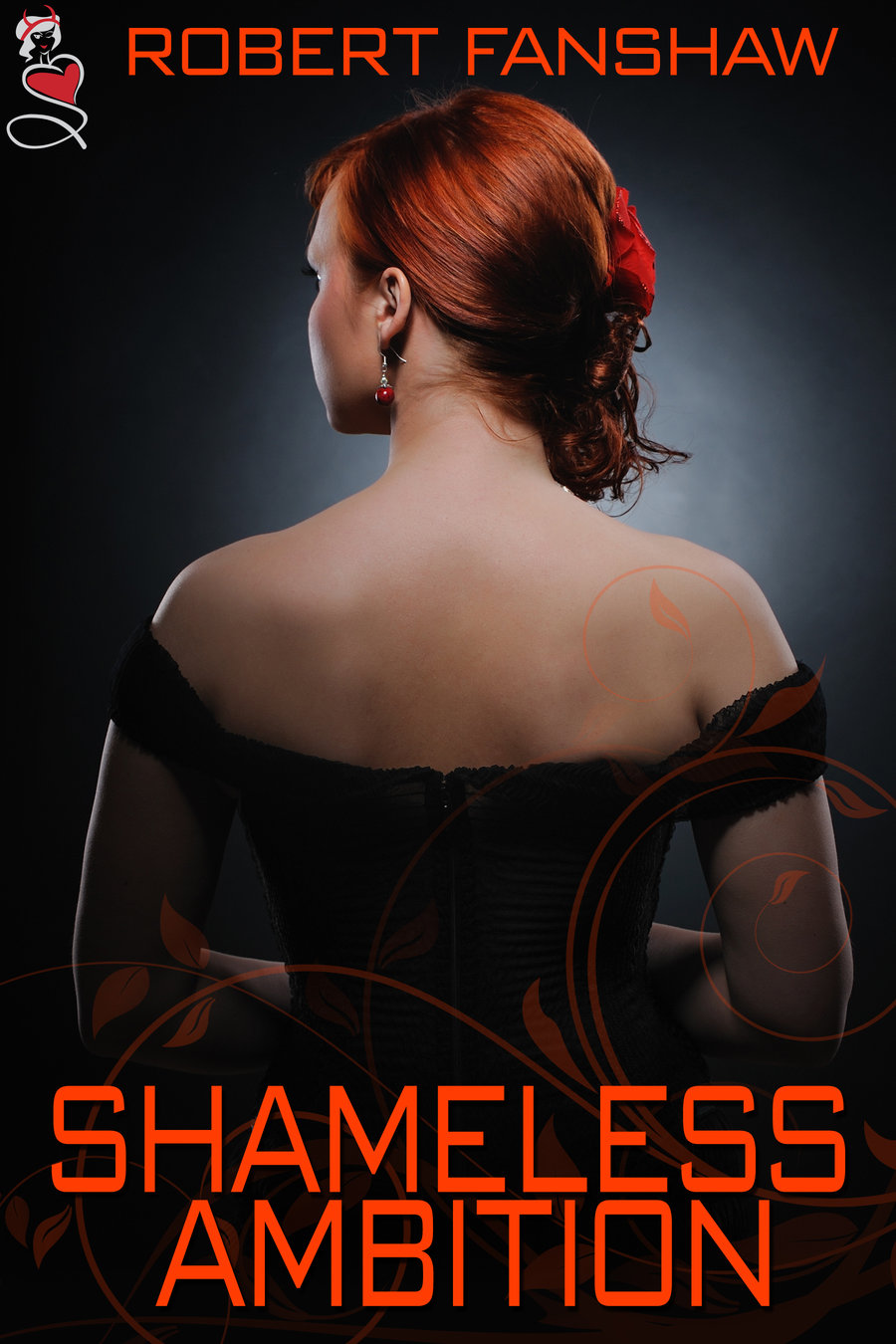
Blurb
High-flying executive Caroline and barrister Robert have been married for three years, and the demands of work have left little time for their relationship. Caroline is angling for a promotion, which will mean spending more time away in Germany. On a management development course in Spain, Caroline is tempted into indiscretions with some of her colleagues, a fact that is noticed by course leader and former chief executive Melody Bigger.
Melody sees in Caroline aspects of her younger self and a barely suppressed exhibitionism. She draws Caroline into a plot to put pressure on Von Wolfswinkle, the German delegate to the European Central Bank. His opposition to Eurobonds is causing hardship across southern Europe, and Caroline is inveigled into a peculiar relationship with Von Wolfswinkle based on his voyeurism and her exhibitionism. Melody wants Caroline to influence the banker’s recommendations to the forthcoming European economic summit.
As Caroline is drawn into a seedy world of private parties for bankers and politicians, she soon realises she has damaged her reputation and her marriage. How will she ever be able to face her colleagues and her husband again?
Extract
Caroline and work colleague Clive have been partnered in an orienteering exercise designed to develop leadership skills. Unfortunately, they get lost by a mountain stream…
Clive inspected his bleeding hand. “You may as well take them off. A few minutes on one of these rocks and they’ll be dry again. And in any case, if it’s not impolite of me to notice, the water has made them transparent.”
“I’m glad to see you’re living up to your reputation, Clive.” Nonetheless, she wriggled out of the wet underwear, and he did the same with his shorts.
“Well it’s not as if I haven’t had the pleasure of observing your features before.”
“What features?”
“Last night, in the pool. I sent you a message complimenting you on the performance. Don’t you check your emails?”
Caroline shut her eyes in the hope of shutting out this new piece of information. She decided denial was the best policy.
“Clive, you are an utter pervert. What have you been imagining?”
“I will show you exactly what I have been imagining.” He delved into the rucksack for his notepad and whizzed his fingers across the screen a few times. He passed her the pad and she was mortified to see a crystal clear video clip of a naked woman pointing her ring finger at the camera and then using the finger to good effect.
“The resolution on these new pads is amazing. And the camera even has a zoom.” He demonstrated the camera’s features with a close-up of Caroline’s face at the moment of abandon.
“You will delete this – this minute – or it’s going in the pool.” He tried to grab it off her but she held the pad out of reach.
“Caroline. What are you suggesting? I would never show this to anyone but you. It’s solely for my own private use.”
“You heard me – in the pool. Tell me how to delete it.”
He showed her how to get the toolbar up and how to send the film to the bin.
“And now tell me how to empty the bin.”
“Oh Caroline, don’t be such a spoilsport. You’re just denying an important, lovely part of yourself.”
“No, I’m not. I’m trying to protect my reputation from two billion creeps like you.”
“Okay, okay, collapse that screen – there’s the bin icon. Press delete again. Gone.”
Clive put the electronic pad back in the rucksack and leaned across Caroline, unnecessarily she thought, to sit the bag upright in the shade of rock. Did he deliberately brush against her breast?
“I really admire you, Caroline. Not just because you’re lying there naked. I love the way you deal with Ivan at the monthly meetings. You’re always so well prepared. He makes the rest of us look stupid but you seem to have anticipated the tricky questions he’s going to ask.”
“Flattery will get you nowhere.” Caroline smiled. She knew what Clive was like. But it was nice that someone noticed how much attention she paid to the monthly figures.
Clive turned towards her and propped himself up on his elbow. “You know, we would make a really good team. I’ve got this plan. In a couple of years’ time when the market for self-care has developed a bit, I’m going to set up my own company – our company if you like. Medical devices at home, aimed at the mass market of hypochondriacs who think they’re ill or are just about to be. I know I could make it work if I had someone like you to keep the cash flow tight and disciplined.”
Caroline continued to look up at the blue sky, feigning indifference. But she was enjoying the attention. It was so rare for anybody to be nice to her at work; usually it was moan, moan, moan.
Not discouraged, Clive placed a hand on her knee. “Just think about it for me, Caroline. These big companies just chew you up and spit you out. We would be free to do our own thing.” The hand moved up and stroked the inside of her thigh.
“Get off, Clive. I’m not that easy.”
“I know you’re not, Caroline. I’m just trying to give you what you want.”
“What I want? How do you know what I want?”
“Well – sex outdoors. You’re obviously an exhibitionist.”
“No I am not.”
“I bet you were Head Girl at school.”
“Yes, I was actually.”
“And you had the lead part in all the school plays?”
“No, not in every school play, once I was the director.”
Guest Blogger Bio
ROBERT FANSHAW
Robert is a barrister who specialises in commercial law. He began writing articles for law magazines but then discovered more interesting material in the world of business inhabited by his wife, Caroline. What started as a blog when his wife was away on business trips became the ongoing story of the dilemma faced by many working couples today – how to balance the competing demands of work, marriage, and supporting a football team.
Now in his mid-thirties, Robert lives in Surrey, England.
Links:
Website: http://www.mywifecaroline.com/
Blog: http://fanshawrobert.blogspot.co.uk/
Facebook: https://www.facebook.com/pages/Robert-Fanshaw/221928037948848?ref=hl
Twitter: https://twitter.com/RobertFanshaw
Purchase links for Shameless Ambition
Amazon: http://www.amazon.com/Shameless-Ambition-ebook/dp/B00CL9G746/ref=sr_1_1?ie=UTF8&qid=1367447106&sr=8-1&keywords=shameless+ambition
Steam eReads
http://steamereads.com.au/
Check out our latest Writing in the Modern Age blog article here.
Blog Archives
April 2024
October 2023
September 2023
August 2023
July 2023
June 2023
May 2023
April 2023
March 2023
February 2023
March 2022
December 2021
November 2021
October 2021
September 2021
December 2020
December 2019
February 2019
December 2018
December 2017
December 2016
July 2016
December 2015
July 2015
December 2014
December 2013
July 2013
June 2013
May 2013
April 2013
March 2013
A glance at Marie's books
Coming Soon
Blog Awards
Contribute
Cool new feature!
Attention
The fact is…our policy has changed considerably, at least for a while. Check out our 'Blog Policy' for more information about the types of features offered, how you can purchase a guest spot, my policy on review requests, and rules for guest writers. Starting from 2021, I was charging for some types of posts. Of course, there is never a fee for a guest article, as long as you adhere to the blog's theme. I also will not charge for big multi-author events which I host (these are giveaways or participation questions, and it's obvious what materials you're providing). If you'd like to submit a guest book review (no, I don't write book reviews, please don't ask me), I will always accept those and not charge you a fee at all. Starting in 2022, I WILL NO LONGER BE posting new release features, cover reveals, Author's Bookshelf features, author interviews, character interviews, and poetry spotlights. I am far too overwhelmed with other work to do constant blog posts. I'll still be writing my own articles sometimes and hosting multi-author special features. For companies that can afford a sponsored post, I'm willing to discuss a reasonable quote for a specialized article which fits within the blog's theme (No blatant promotions). Email me at
marieannlavender@
gmail.com
if you wish to participate in a unique post. Feel free to approach me with your creative ideas about a blog post. Slots at Writing in the Modern Age are always first come, first served. Contact us and reserve a spot! Refer to the 'guest schedule' at the top of the screen for further clarification about availability. Thanks for understanding.
Disclaimer
Thoughts and opinions by guest authors do not necessarily represent any thoughts and opinions by this website's administrator, nor are they directly endorsed. All writings on the blog are subject to review and editing. Please visit our blog policy to understand the site's theme a little better.
Use our hashtag #WritModAge when you mention us!
Should you edit your own work? Definitely! - The Ultimate Guide to Editing a Book
Are you a technical writer? Look no further for some tools of the trade!
Love physical books like me? Check out this cool DIY link!
Sign up for Marie's author newsletter! Get on her mailing list @
Blog Categories
All
2013
2014
2015
2016
2017
2018
2019
2020
2021
2023
99 Cents
Accidental Marriage
Achievements
Adult
Advice
Amazon Gift Card
Angela Terry
Annual
Anthology
Article
Articles
Author Interview
Authors
Authors Helping Authors
Authors Helping Writers
Author Website
Autumn Bardot
Avoiding Burnout
BDSM
Behind The Scenes
Blog
Blog Post
Blog Tour
Book
Book Covers
Book Interview
Book Lovers
Book Review
Books
Bookshelf
Branka Čubrilo
Challenges
Characterization
Chick Lit
Children's Books
Clean Romance
Collection
Coming Soon
Contemporary
Contemporary Romance
Cover Design
Cozy Mystery
Cozy Paranormal
Creative Solutions
Creativity
Crime
Culinary Theme
Dark Fantasy
Dave Chesson
Day In The Life
Deadly Deceit
Description
Discount
DIY
DJ Swykert
Drama
Drinking
Editing
Emilia Ares
Enemies To Lovers
Erotica
Erotic Romance
Evelyn Sola
Event
Family Life
Fantasy
Fantasy Romance
Feature
Features
Fiction
Finding A Good Editor
Fiona Tarr
Food Fiction
Forever
Francis H. Powell
Freelance
Friday Abumere
Friends To Lovers
Genre
Genres
Gentle Sensuality
George Veck
Giveaway
Gothic Novel
Guest Authors
Guest List
Guest Post
Guest Writer
Haunting In Hartley
Helpful
Heroes And Villains
Historical Fiction
Historical Romance
Holidays
Hope
Horoscope
Horror
Human Condition
Humorous Fiction
Inspirational
Interview
Interviews
Isobelle Cate
Ivy Nelson
Jaime Martinez-Tolentino
Janice Tremayne
Journaling
KateMarie Collins
Laura Graham
Legends Of Lust
Lessons
LGBT
Linda Heavner Gerald
List
Literary Fiction
Love
Love And Other Sins
Marketing
Mary Maddox
Mathis Bailey
Memoir
Message
Michael Aronovitz
Mindset
Morality
Multicultural Fiction
Multicultural Romance
Mystery
Mythology
New Adult
New Author Tips
New Book
New Release
New Year
Non-fiction
Novella
Novels
One Visit
Optimism
Paranormal
Poems
Poetry
POV
Promo
Promotion
Psychological
PTSD
Publishing
Raising Kane
Rating
Readers
Reading Preferences
Reality
Recommended Reads
Reference
Reposted Book Review
Requiem For Barbara
Research
Resources
Reverse Harem
Review
Reviews
Robin Book Reviewer
Robin Reviewer
Romance
Romance Novel
Romance Writing
Romantic
Romantic Comedy
Romantic Drama
Romantic Fiction
Romantic Suspense
Rose Atkinson-Carter
Rosemarys Beach House
Sale
Science Fiction
Score
Self Help
Self-help
Sensitive Topics
Serial Killer
Service
Sexy
Signs
Small Town
Social Media
Sophia Zaccaria
Spotlight
Spring
Steamy Romance
Story Elements
Straight
Structure
Style
Subscribers
Subscription
Supernatural
Susan Lynn Solomon
Suspense
Takedown
Teaser
Techniques
Teen Issues
The Indie Pen PR
Theme
The Trials Of Adeline Turner
Thoughts On Writing
Thriller
Time Travel
T.J. Banks
Travel Fiction
Truth In Fiction
Tuscany
Update
Urban Fantasy
Valentines
VB Book Reviewer
Womens Fiction
Writers
Writer's Block
Writer's Life
Writing
Writing In The Modern Age
Writing Process
Writing Rules
Writing Tips
#WritModAge
Xpresso Book Tours
YA Romance
Young Adult
Zodiac Chart

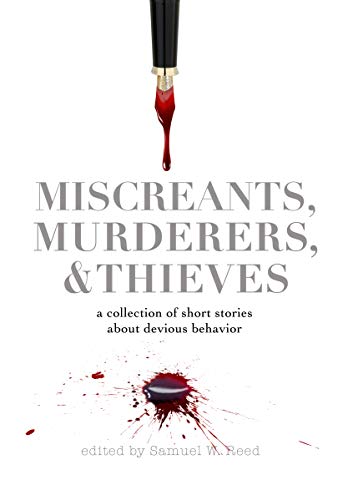


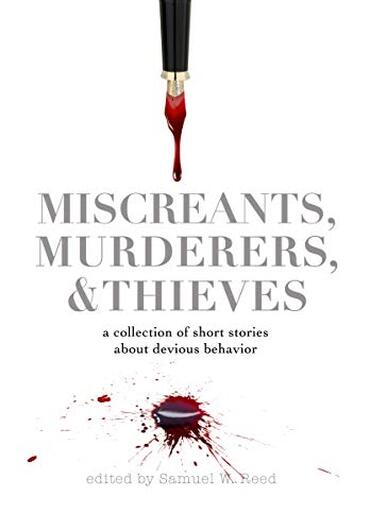




















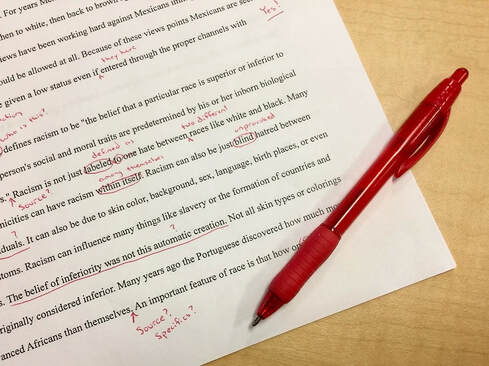

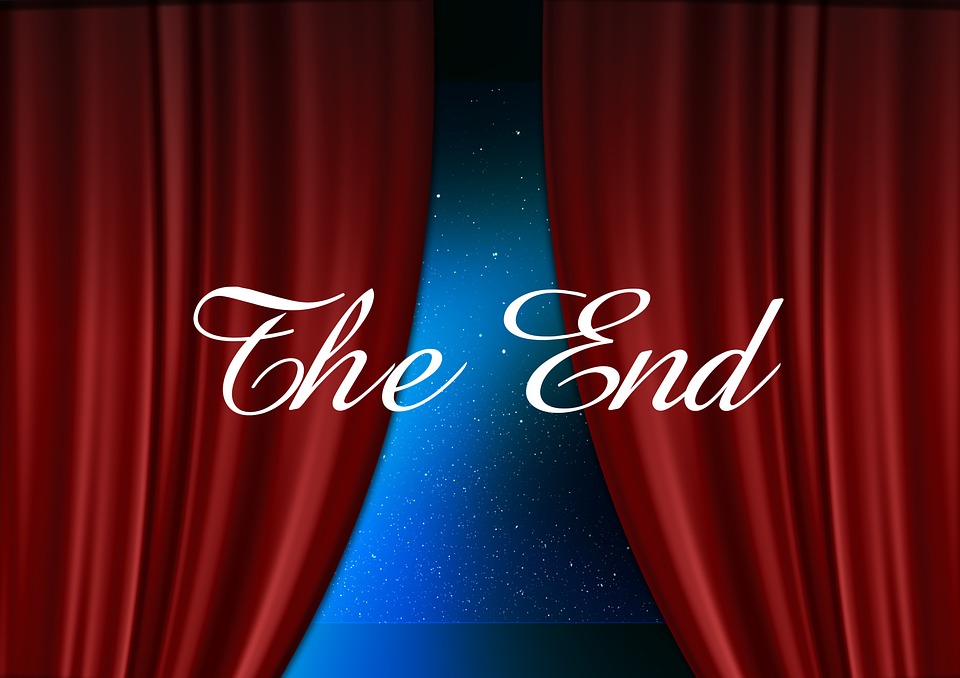






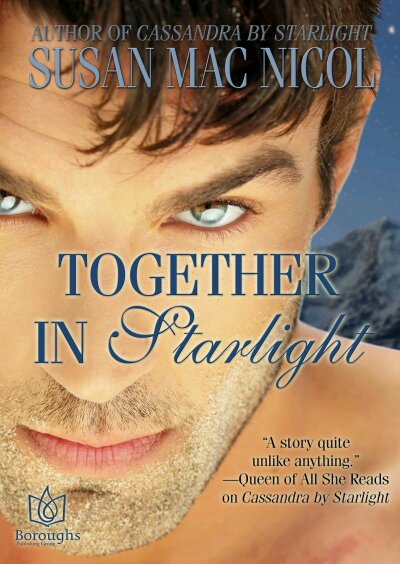





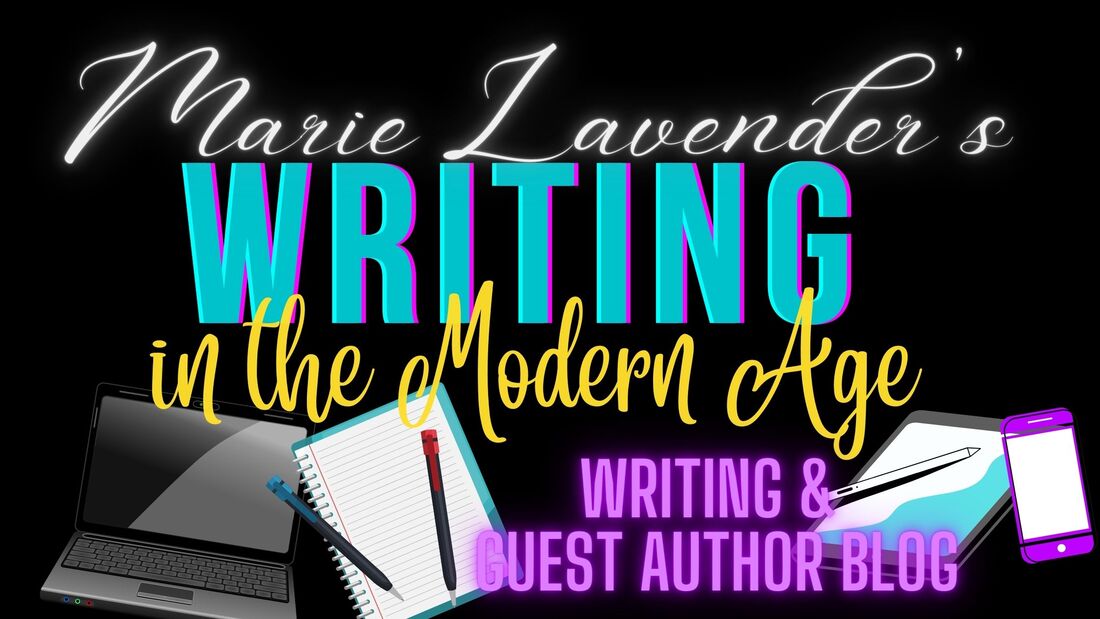

 RSS Feed
RSS Feed

